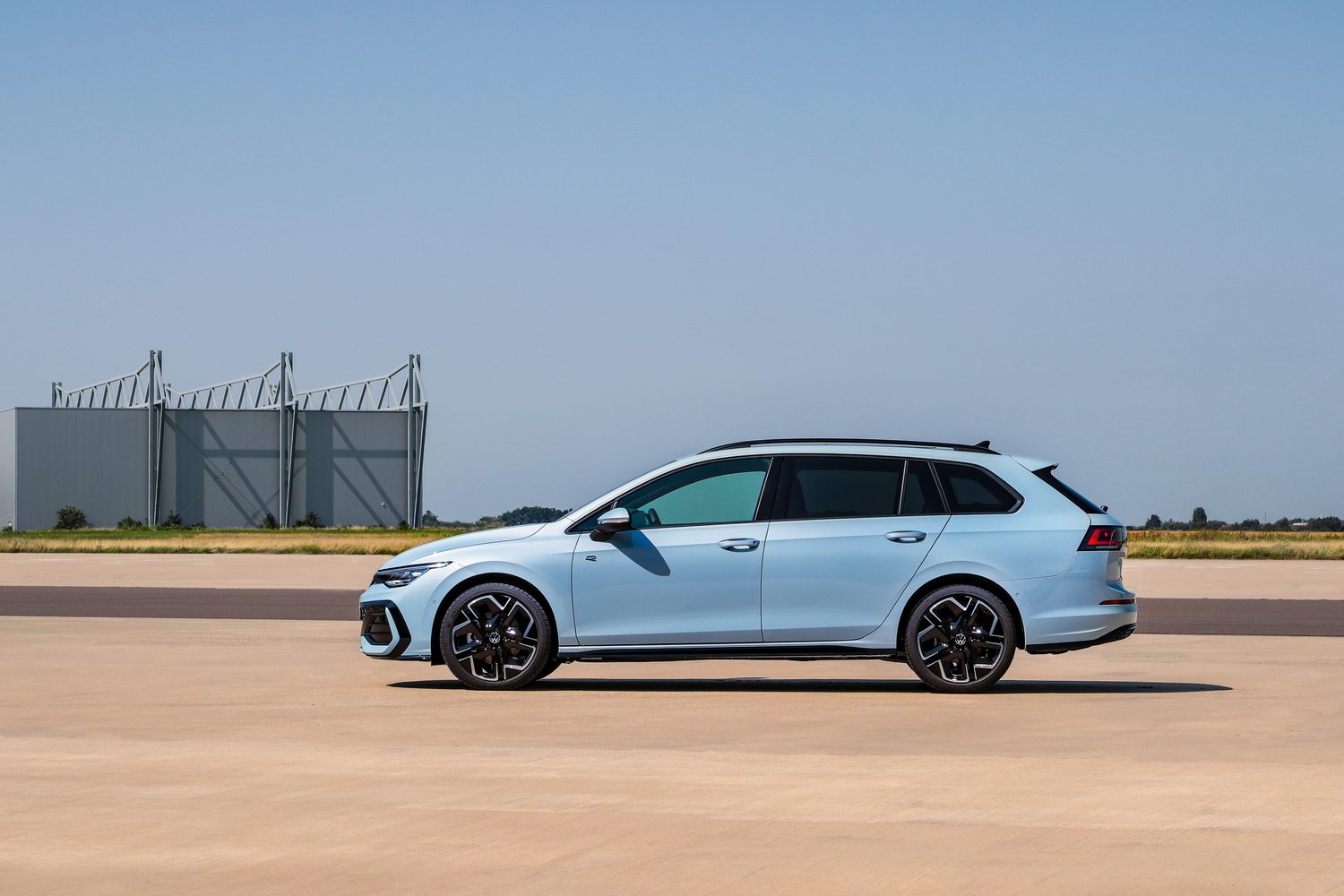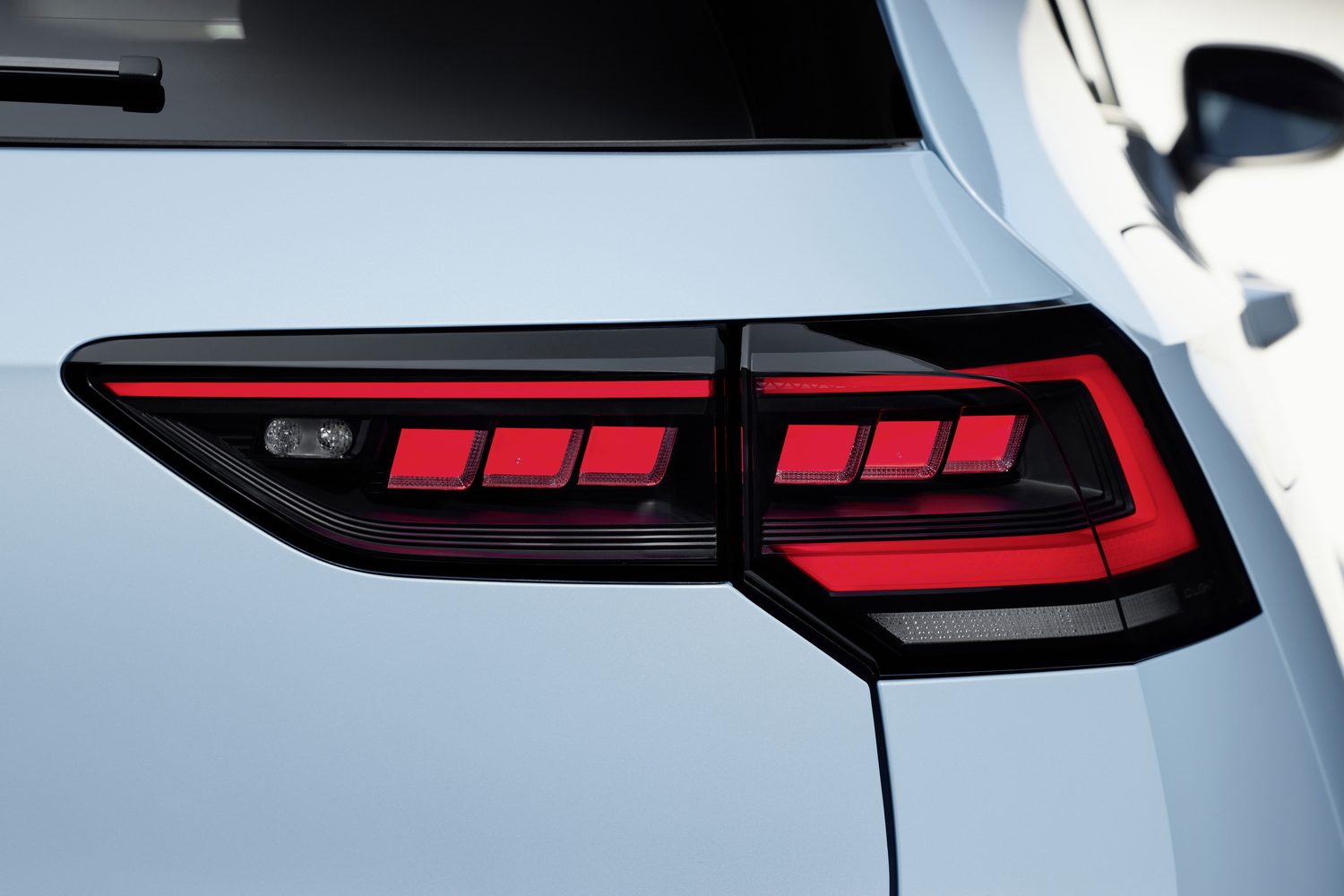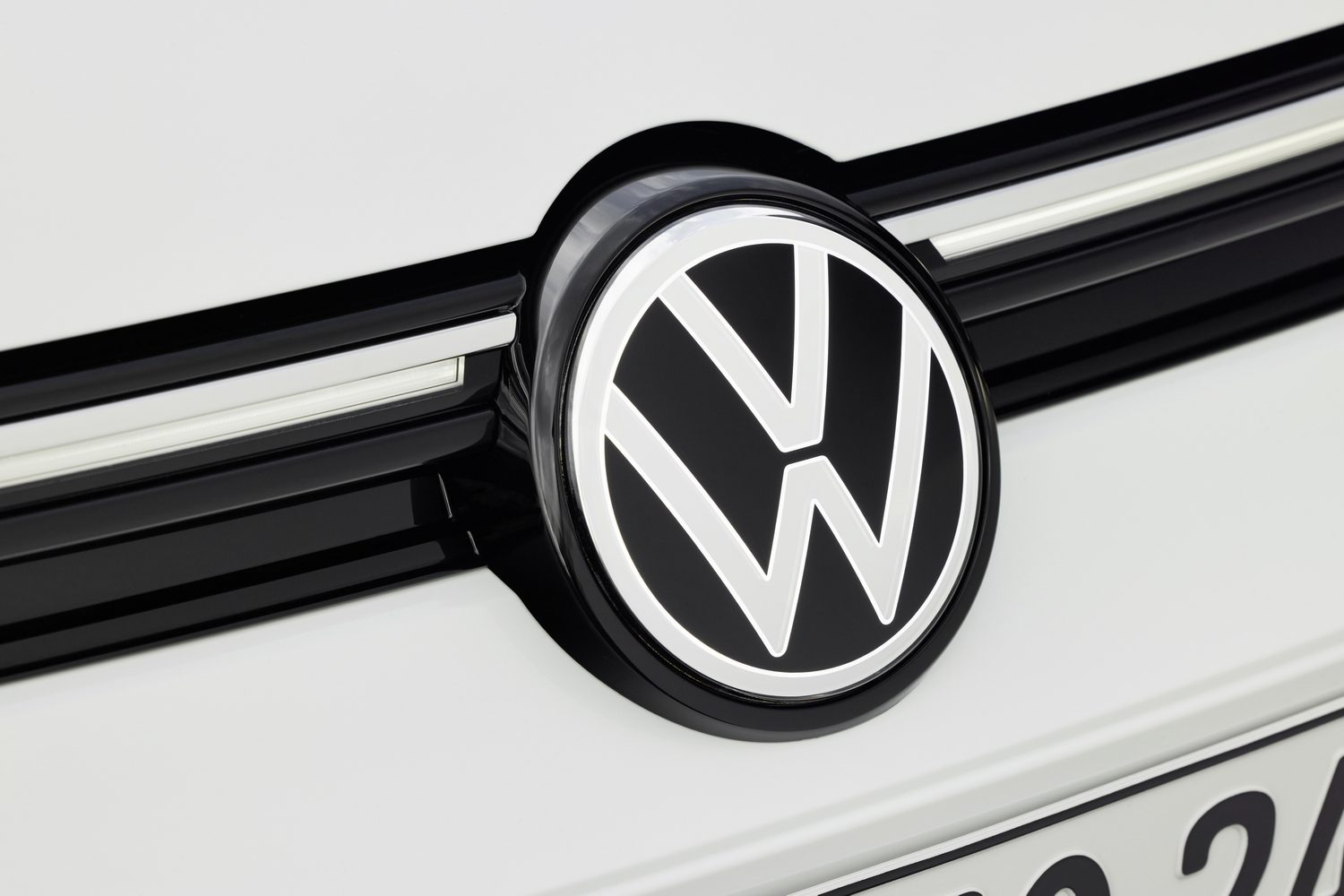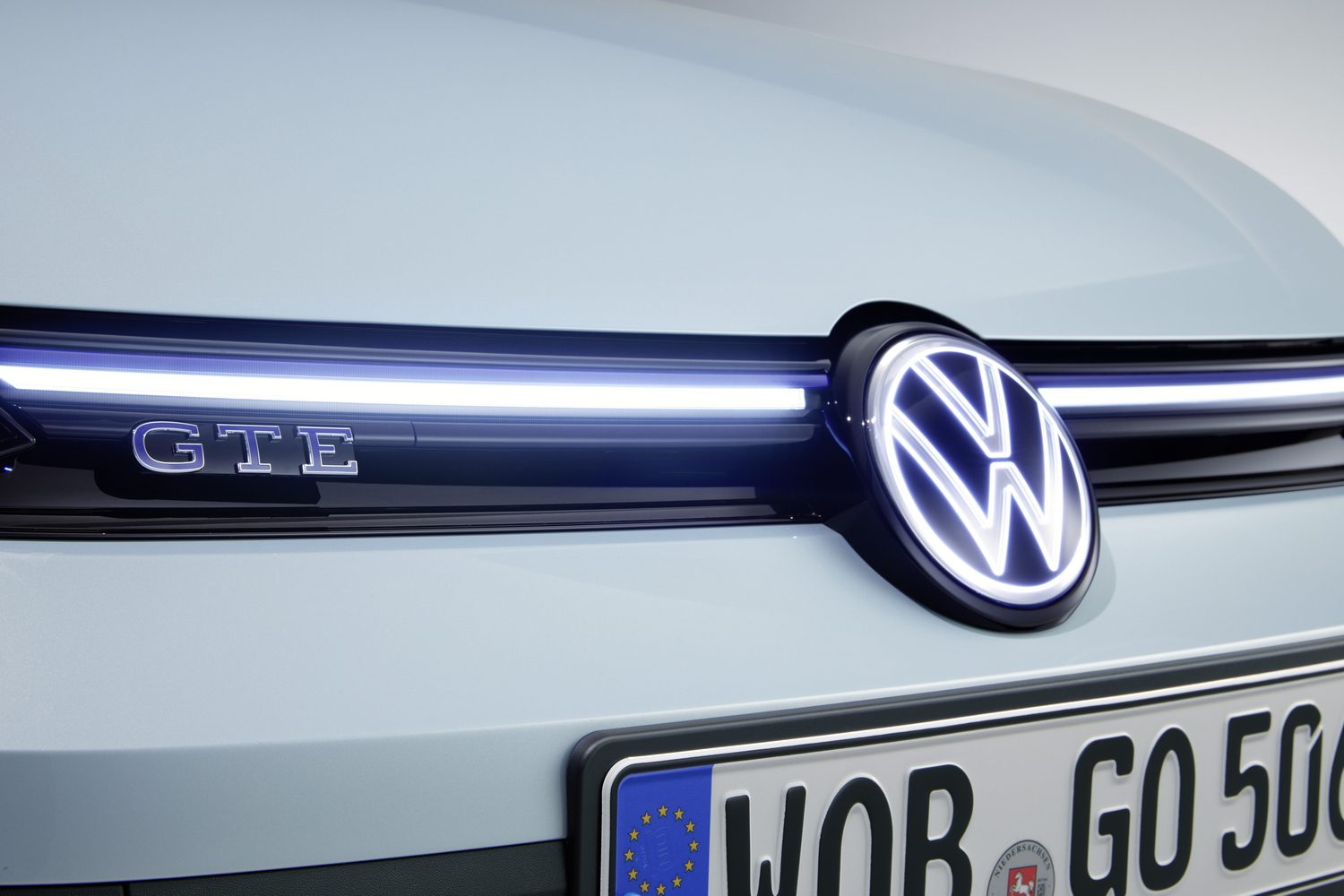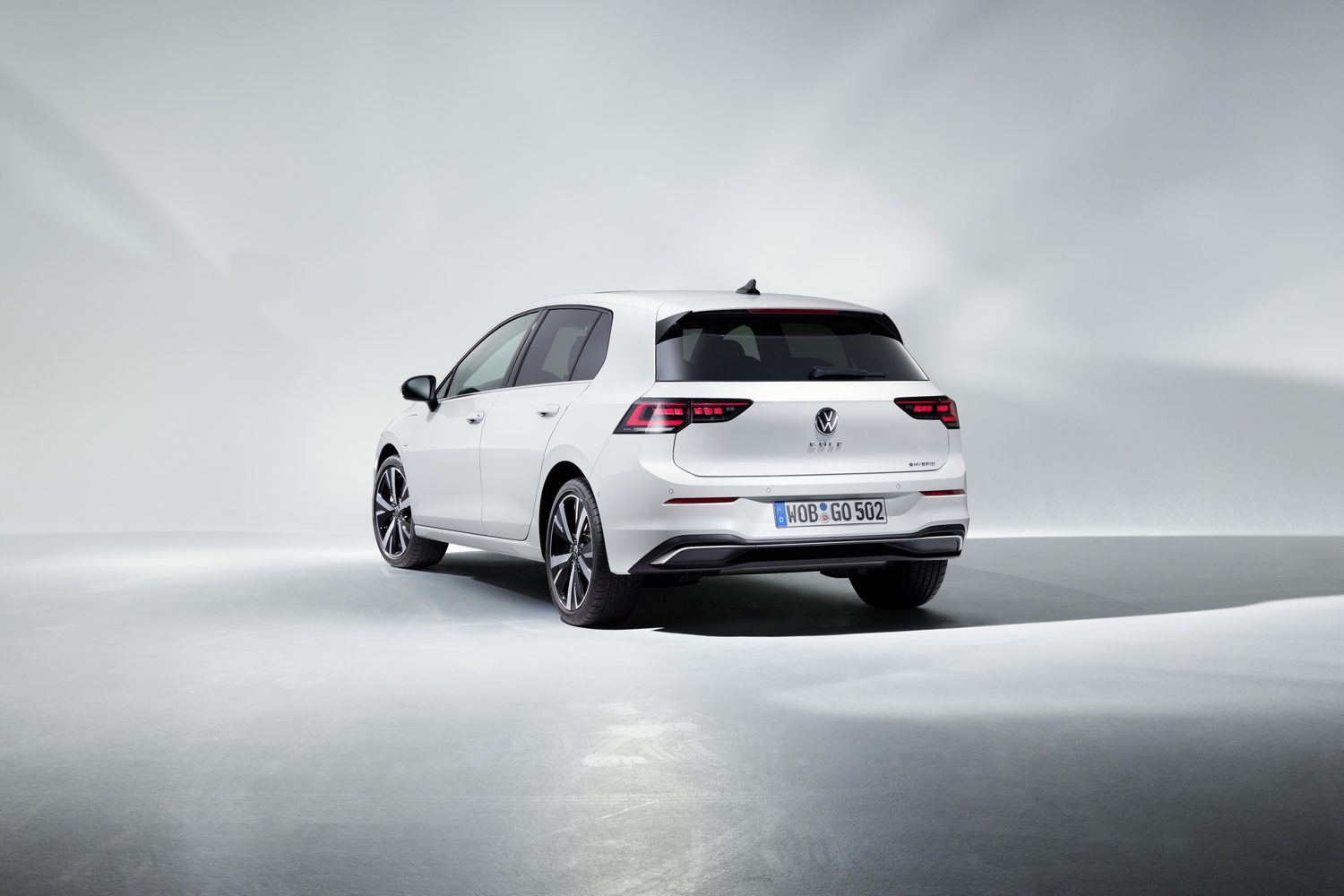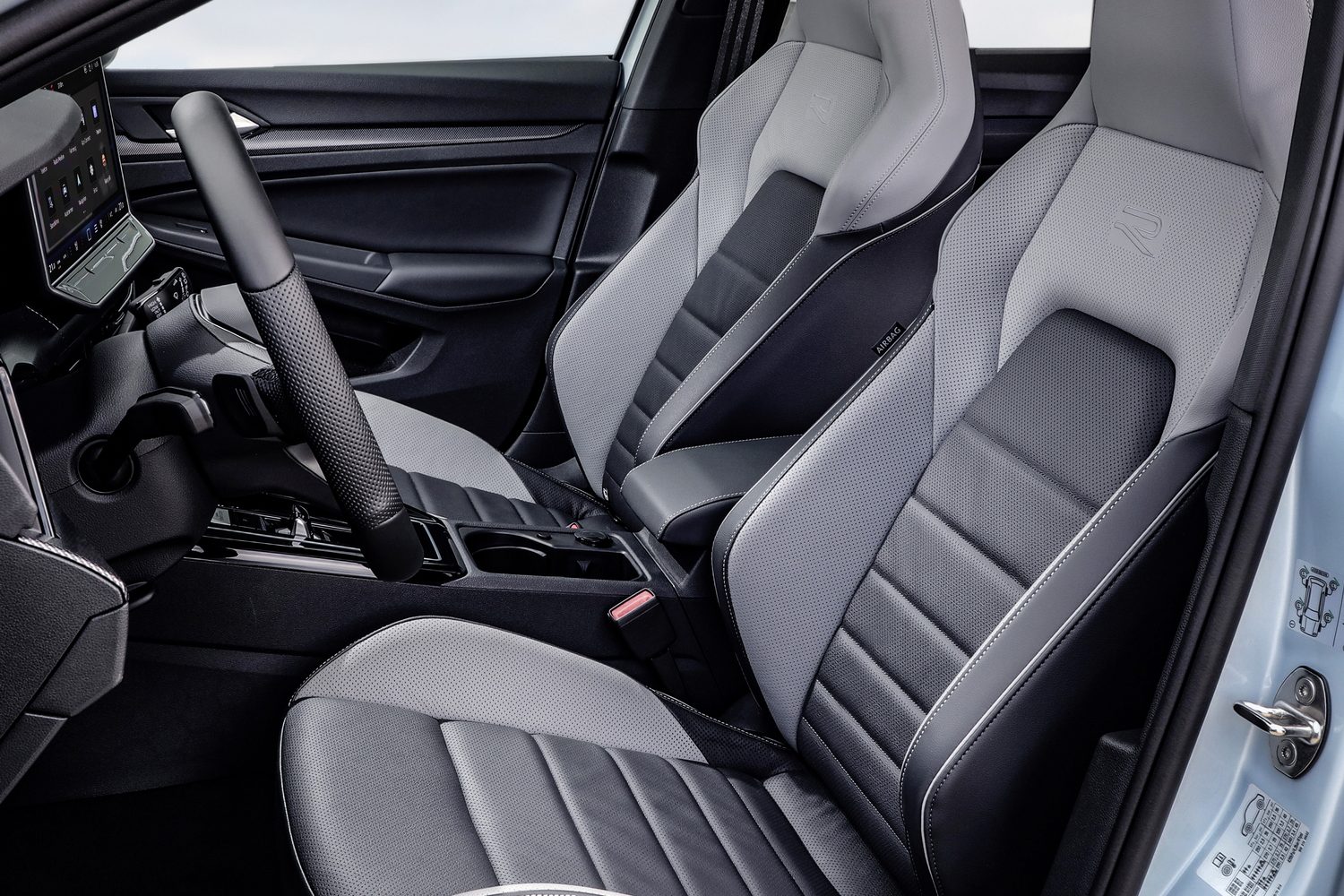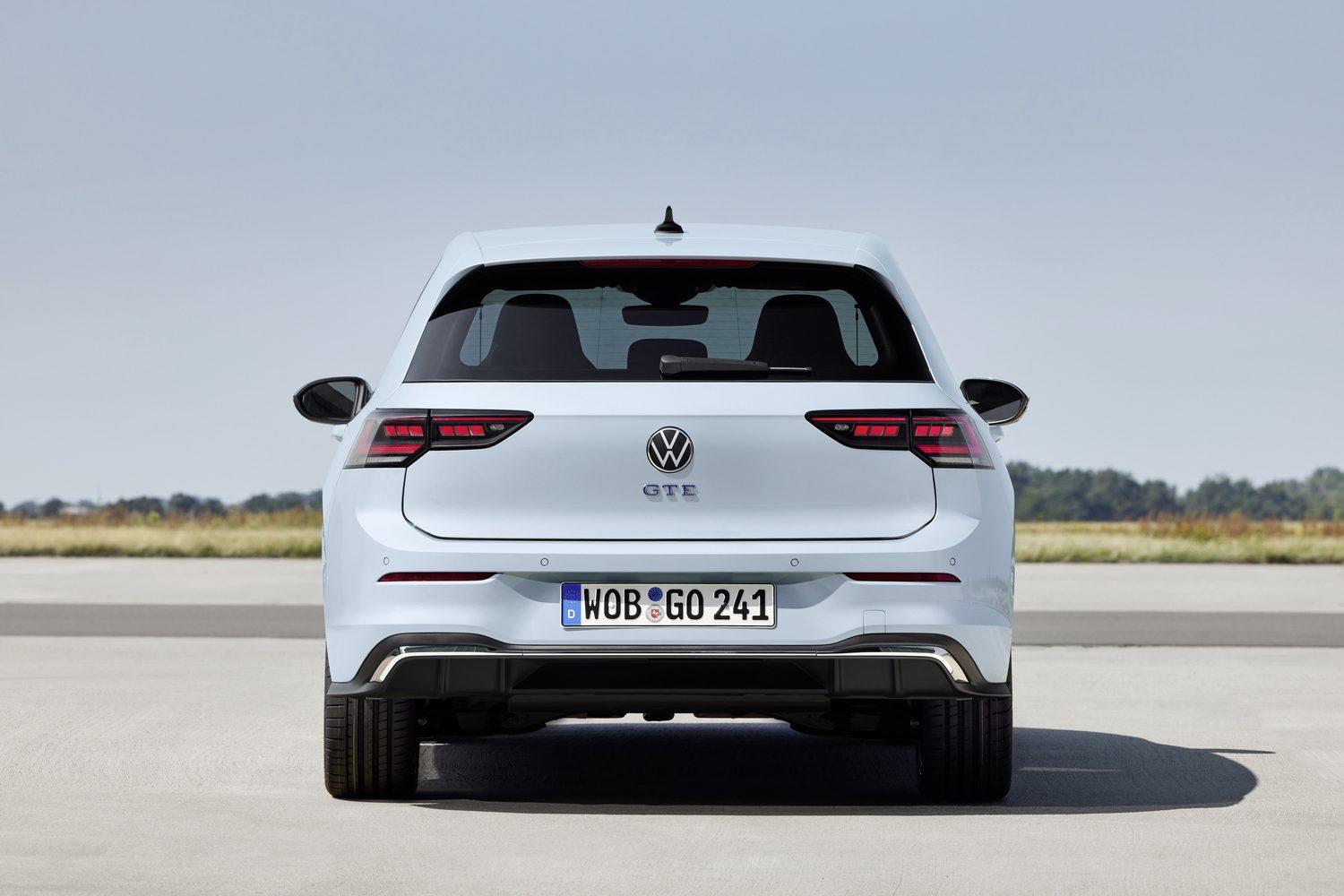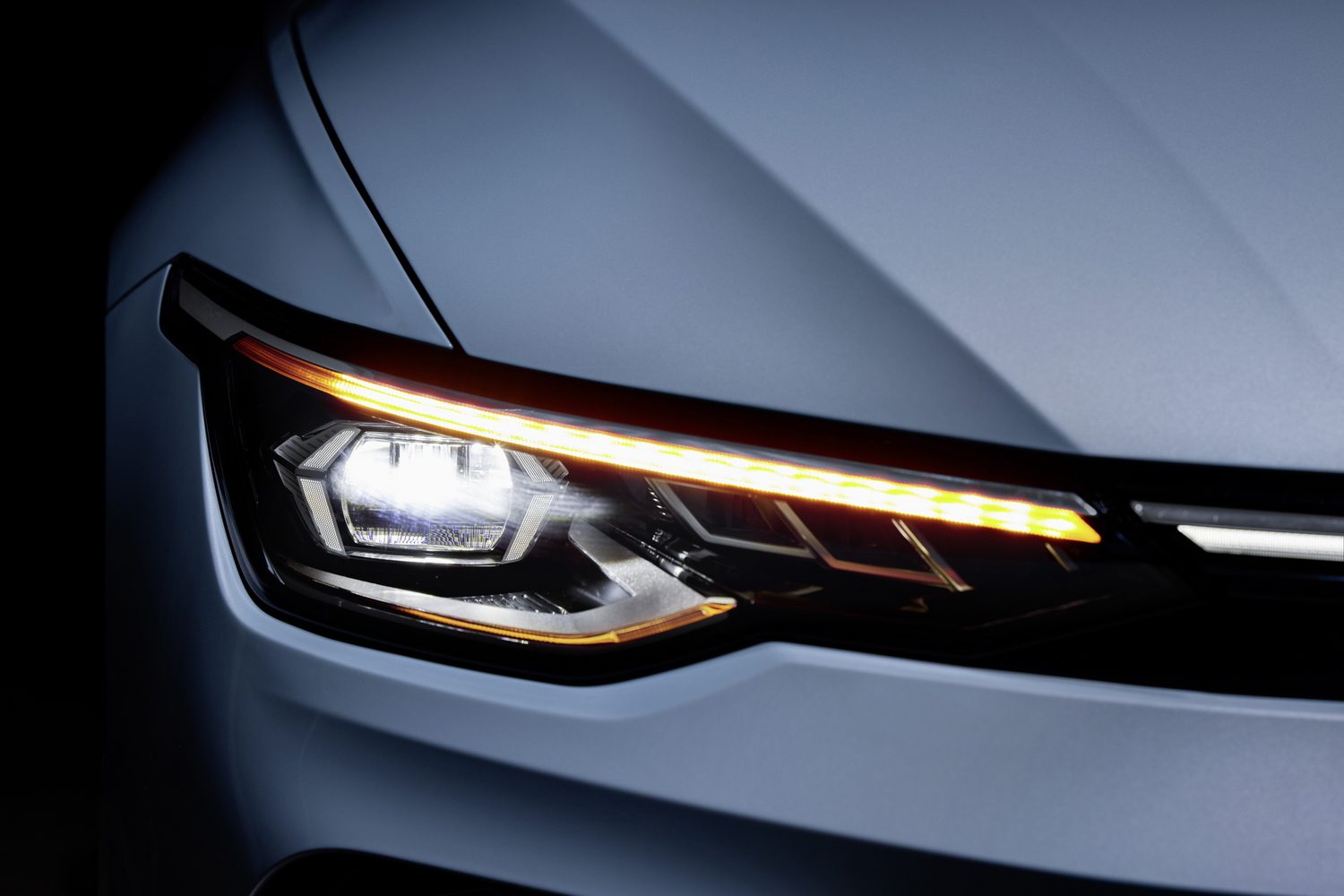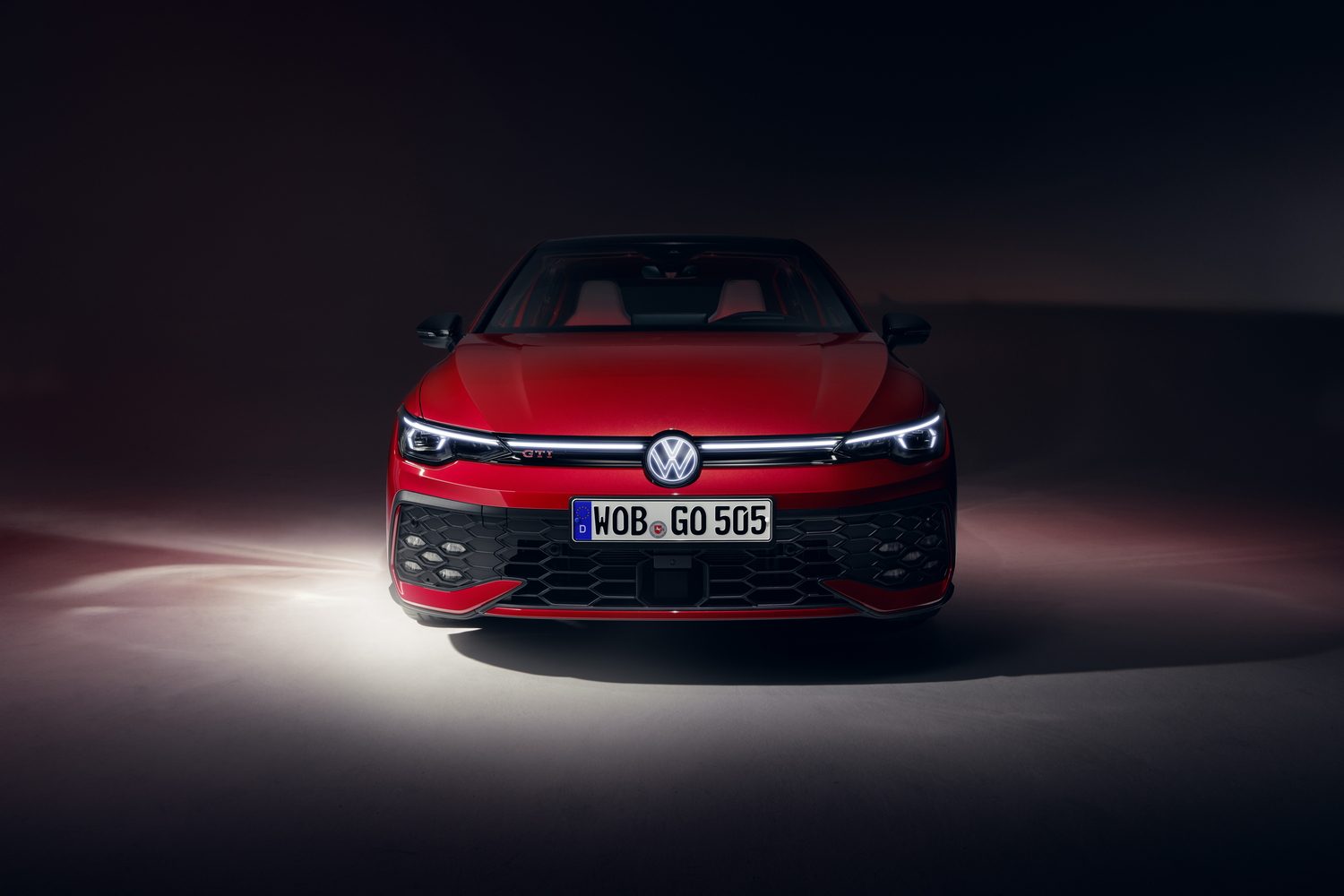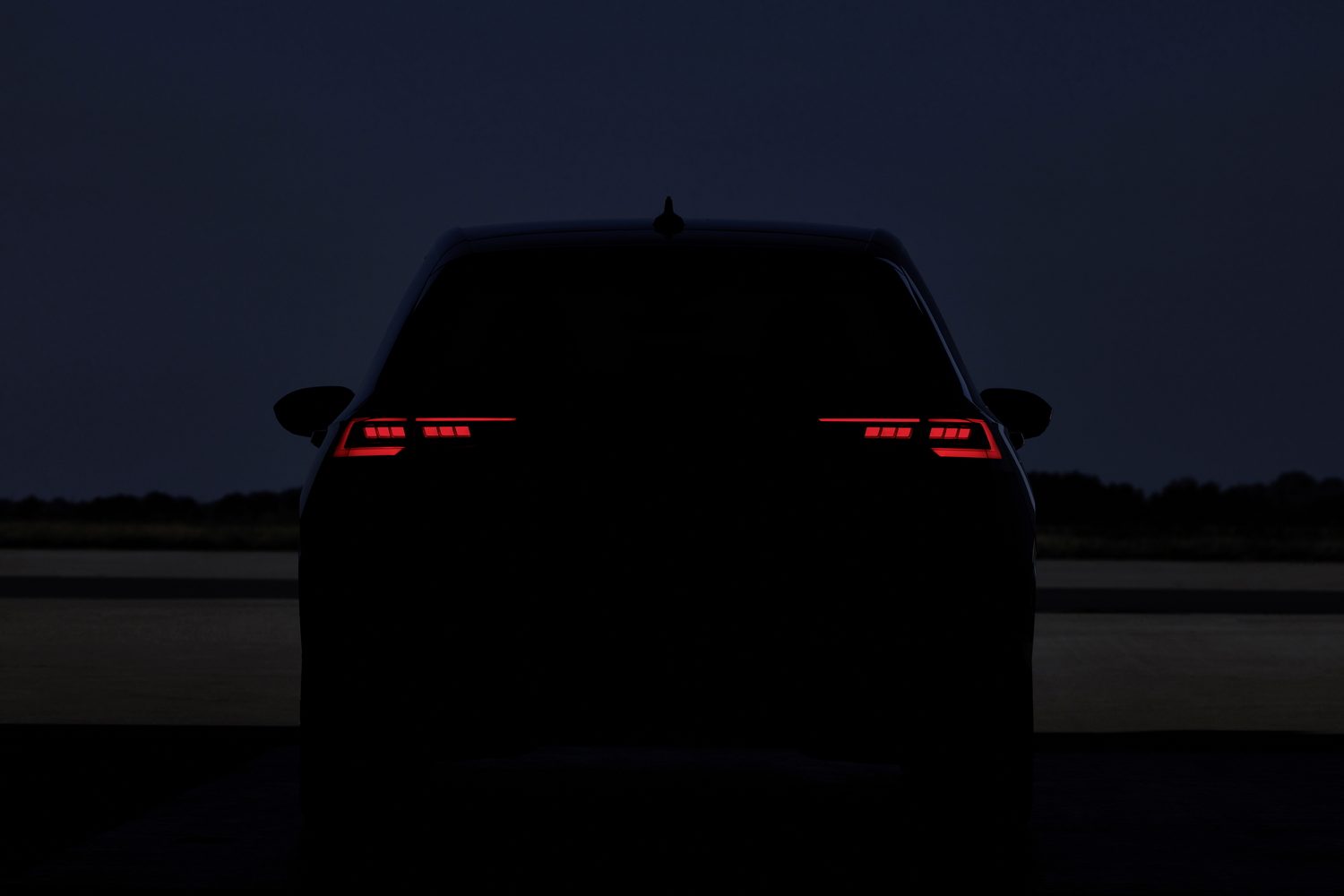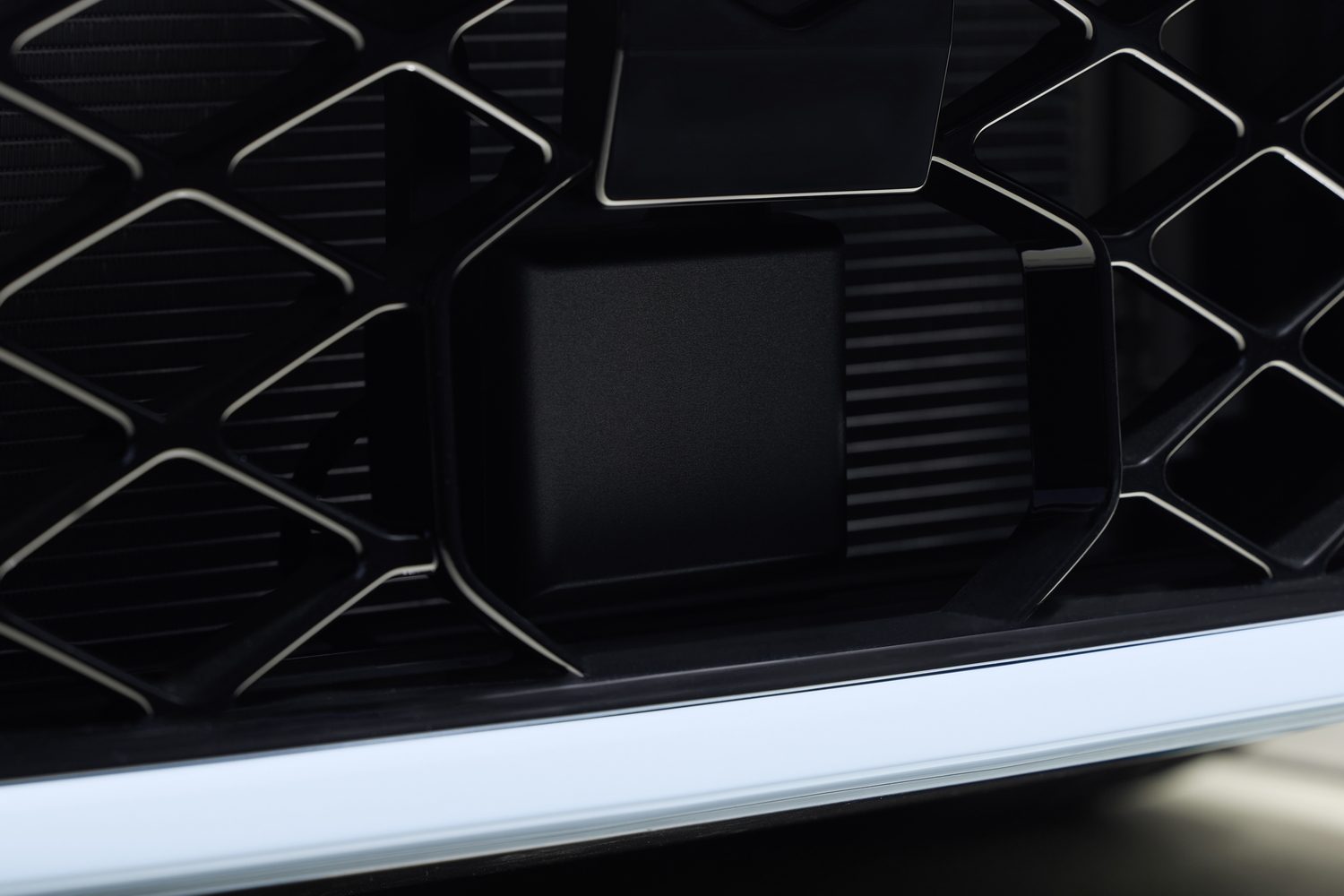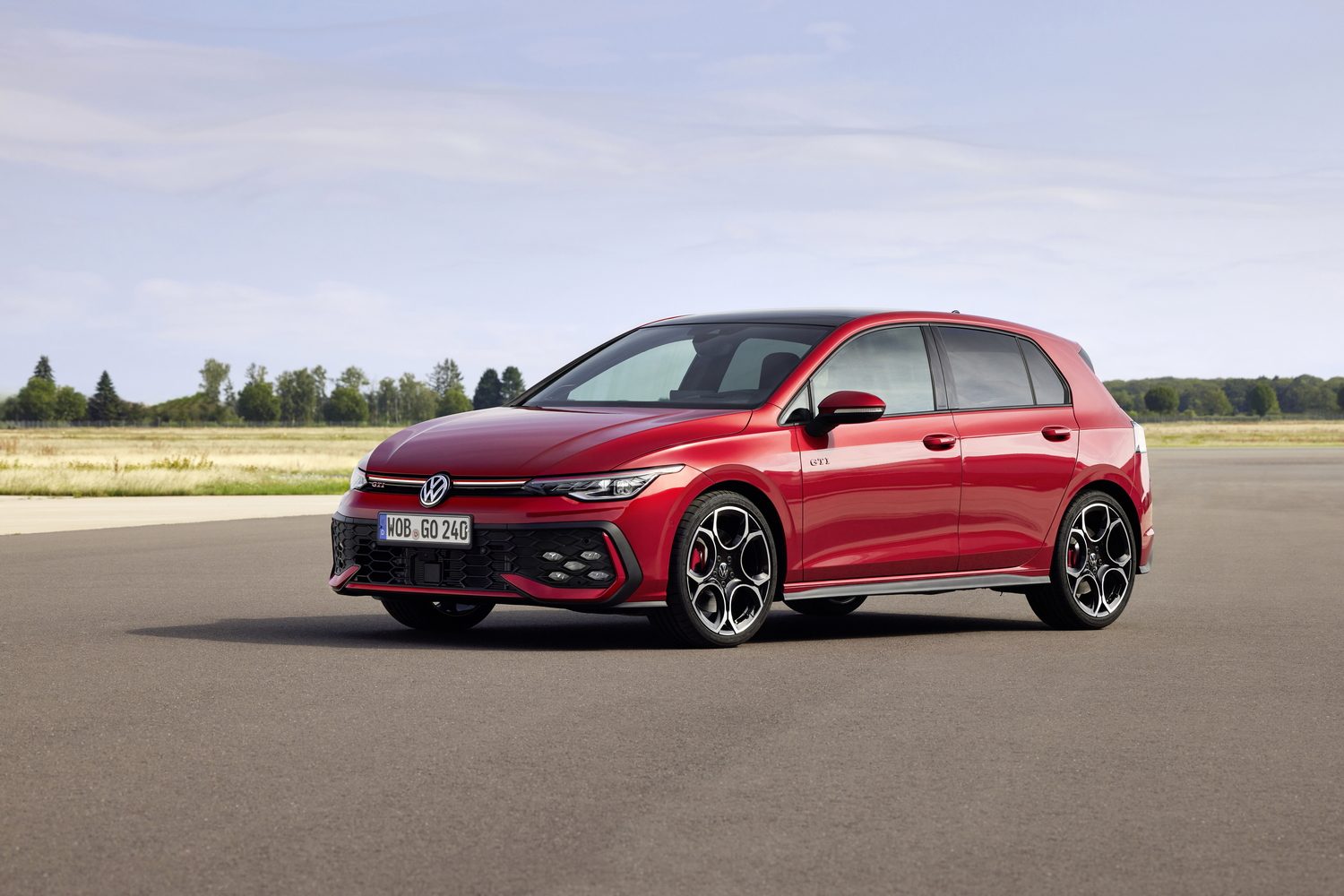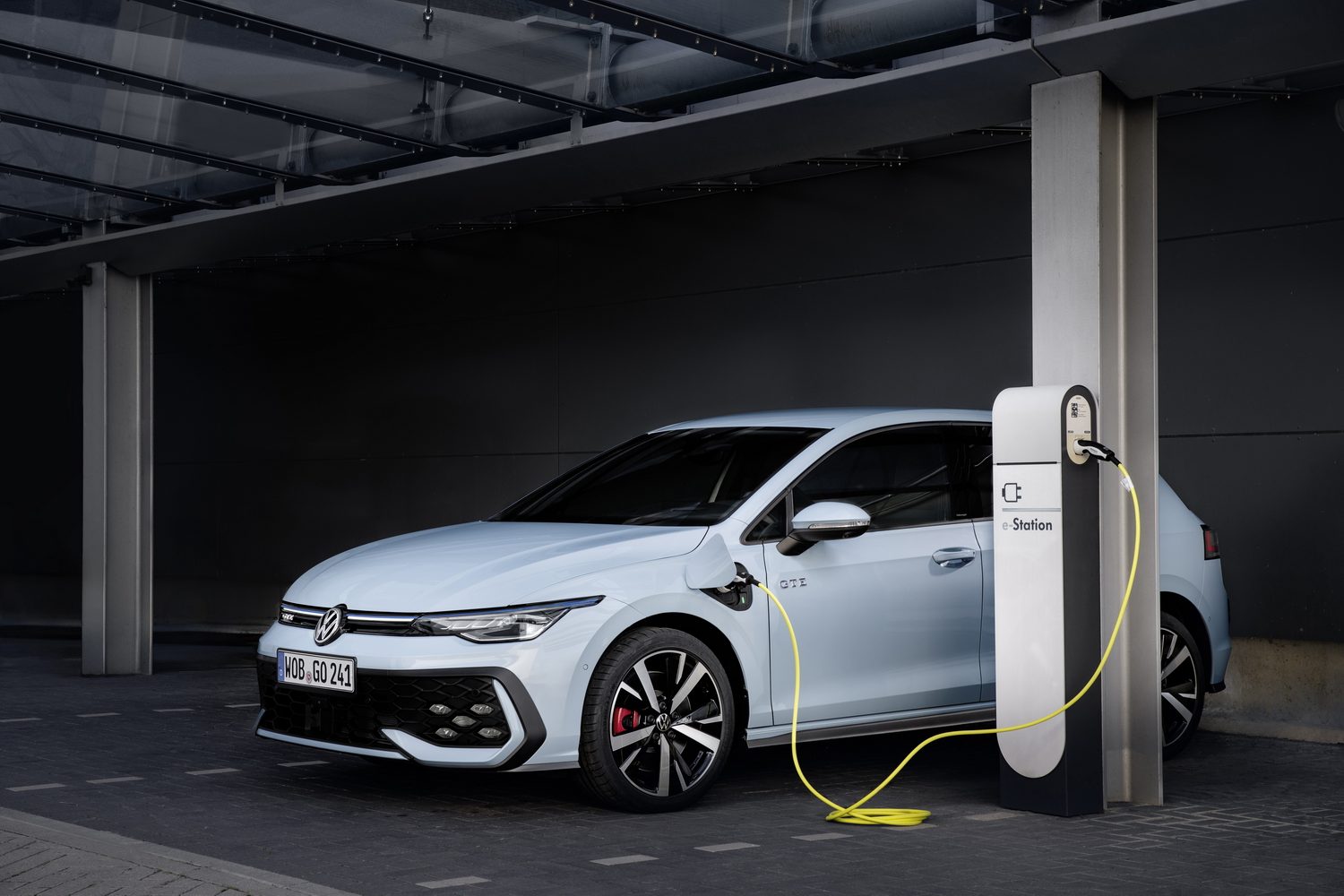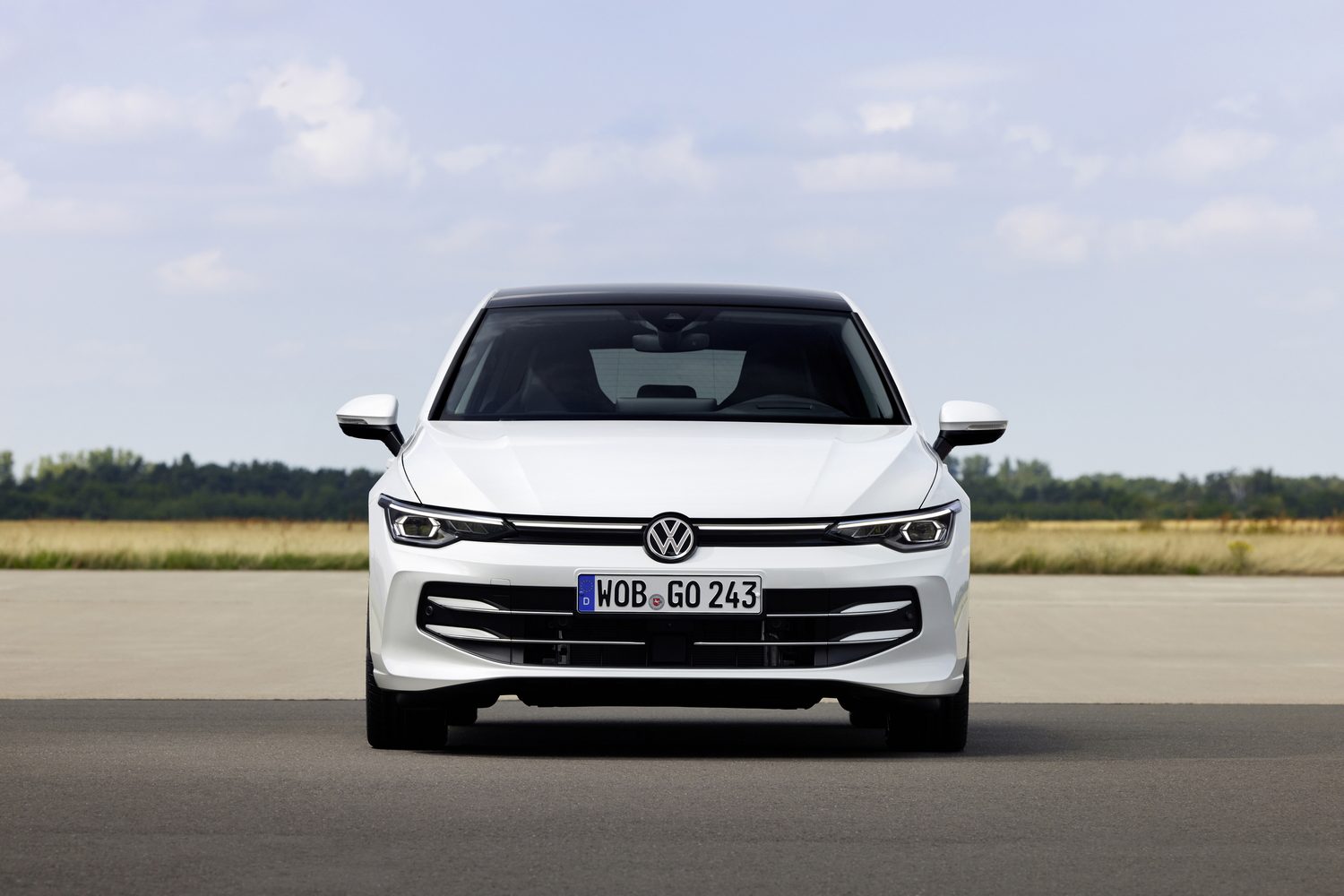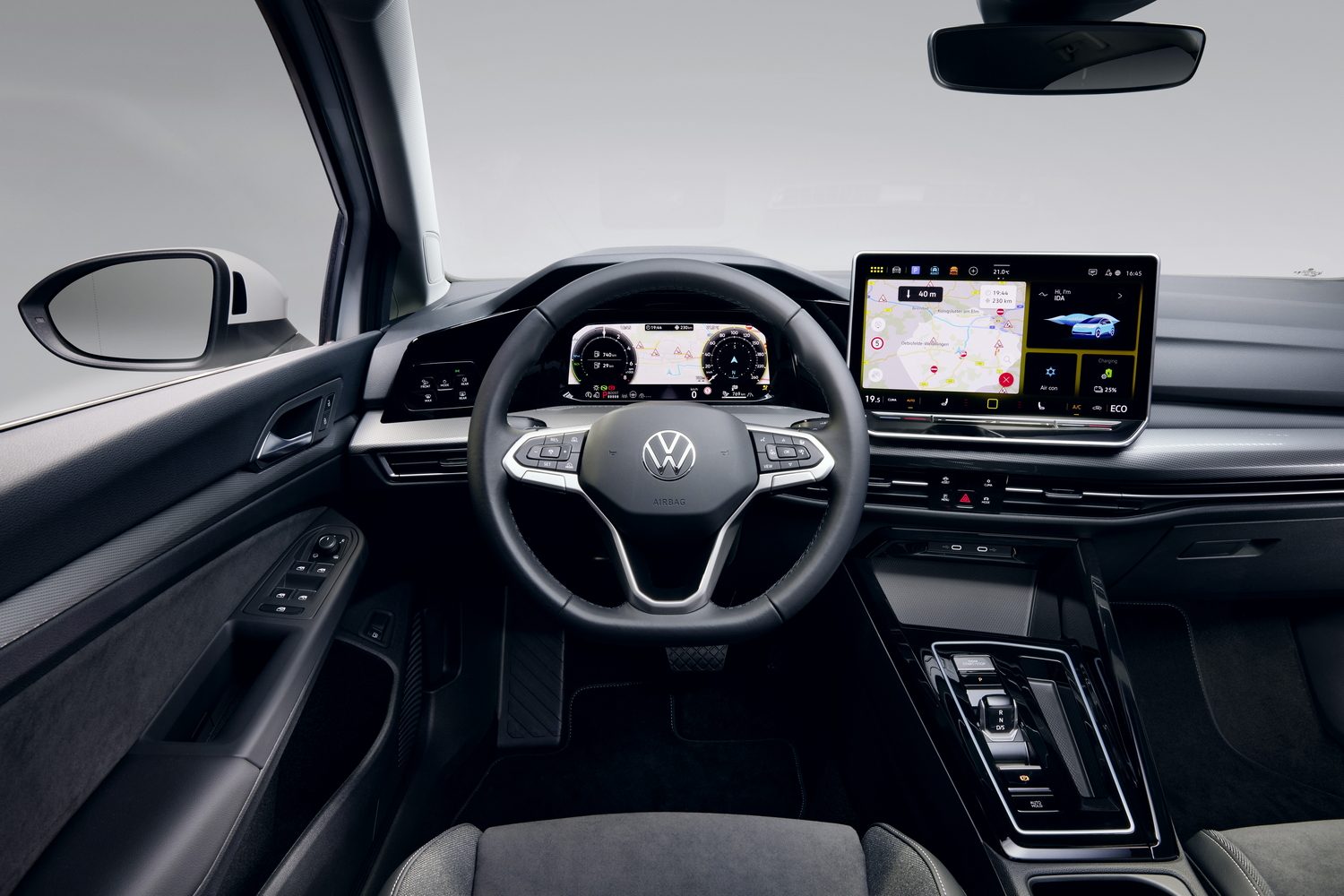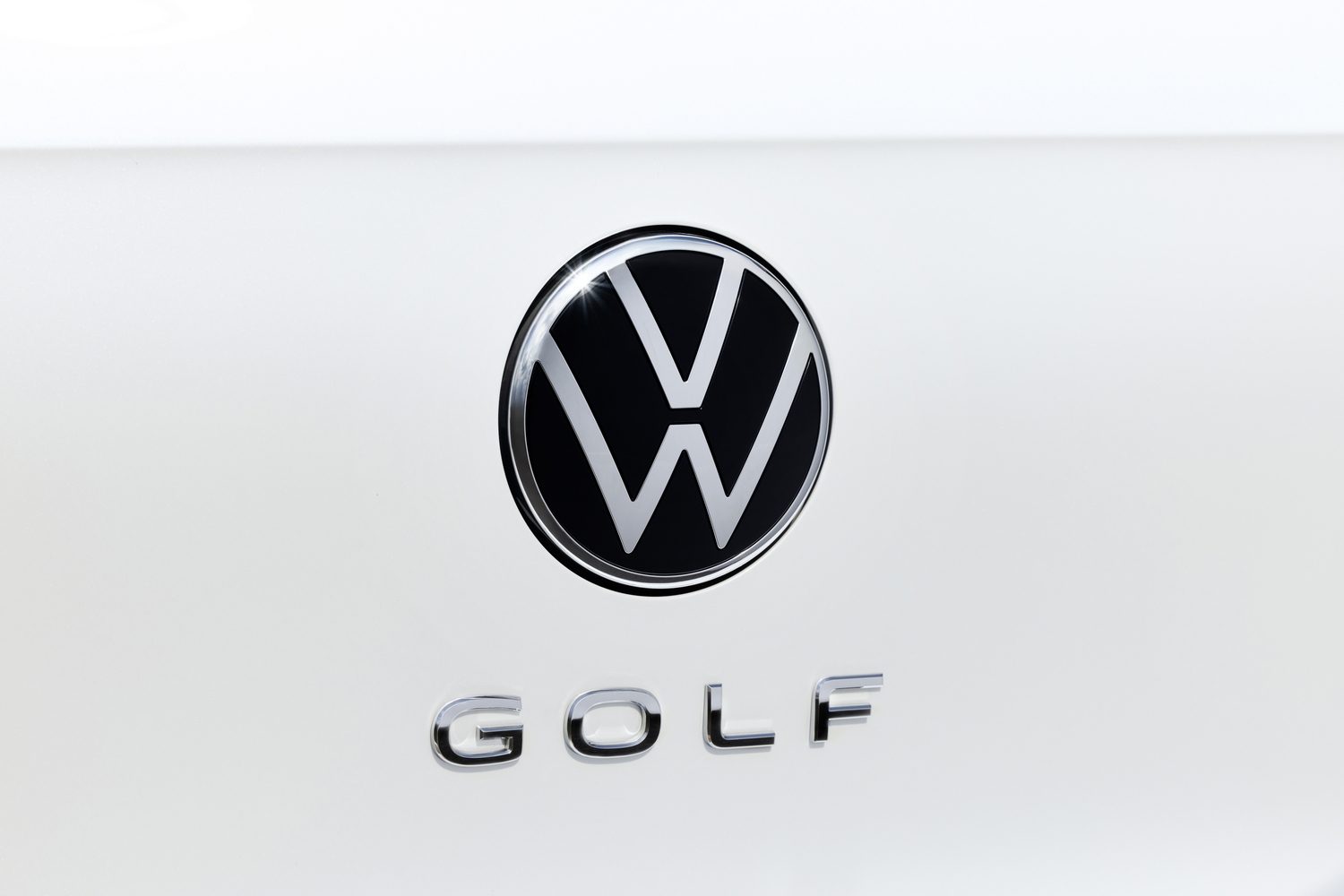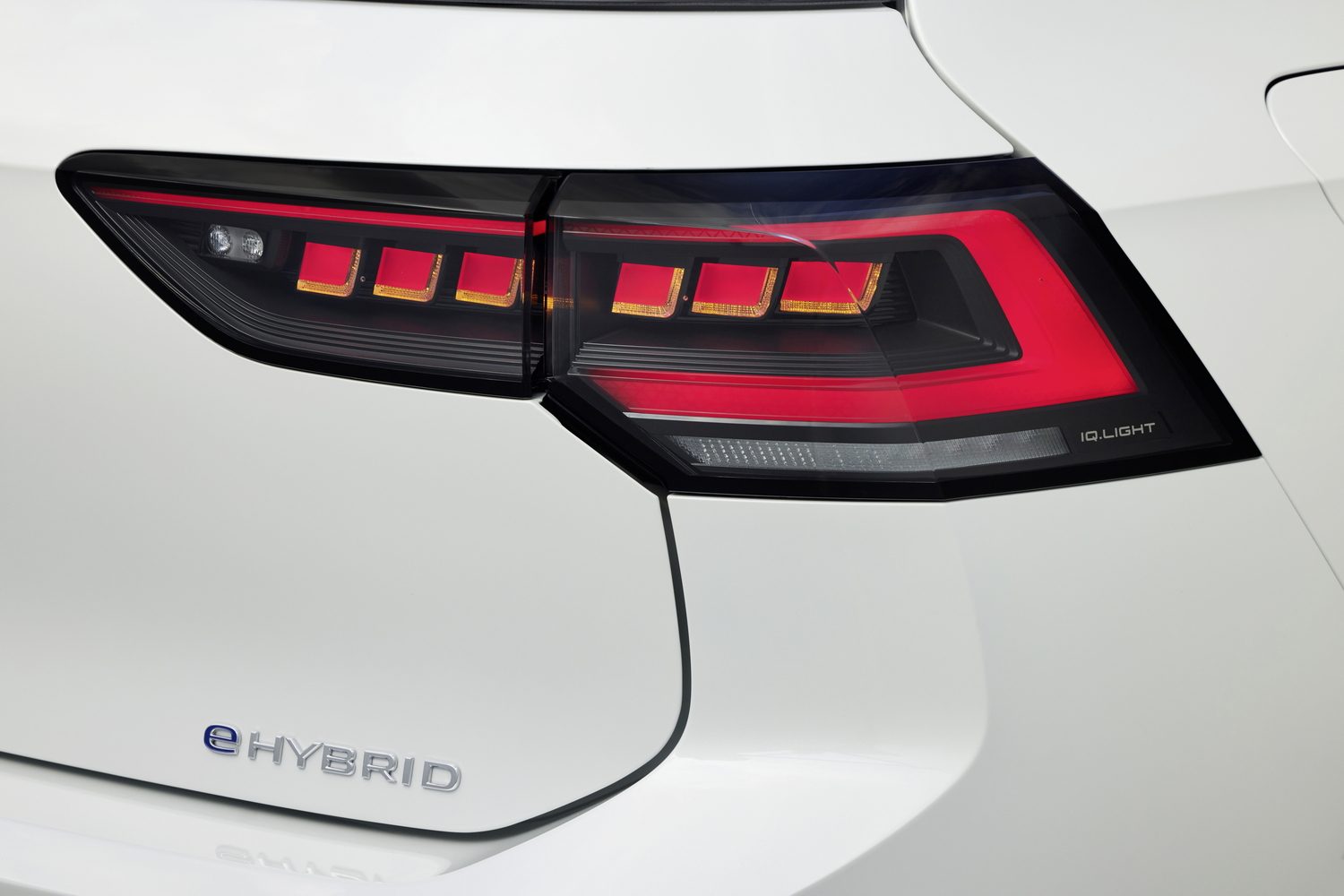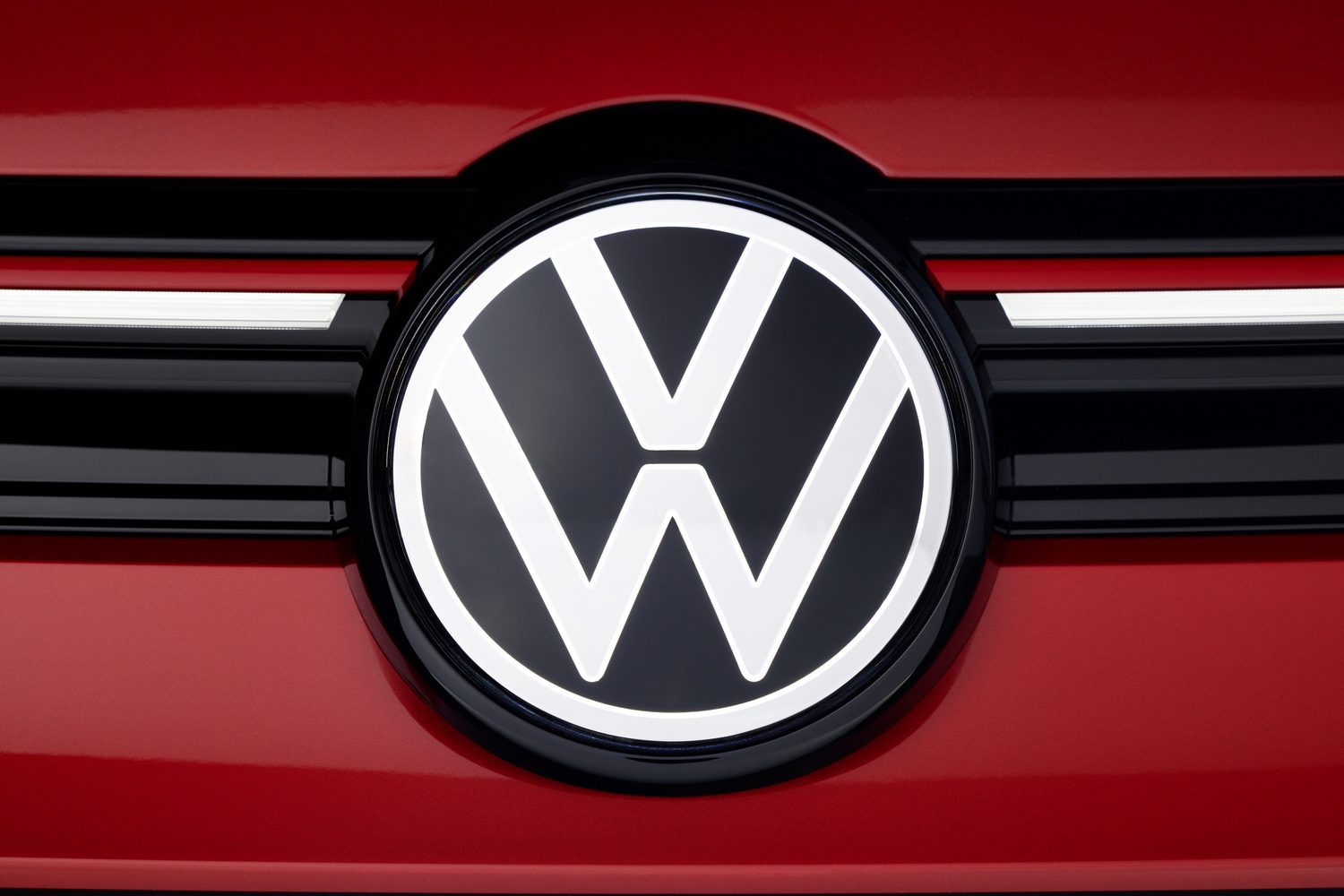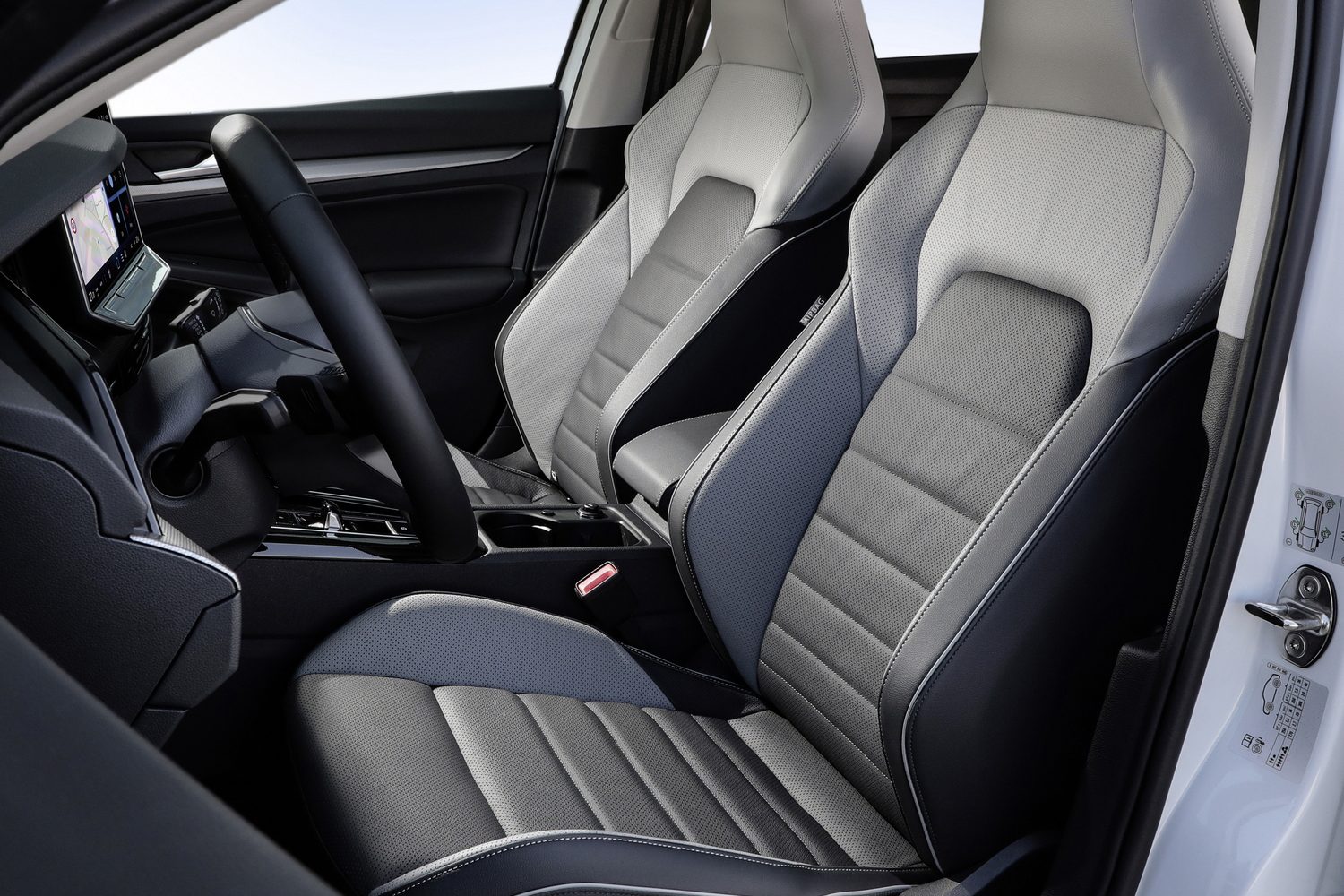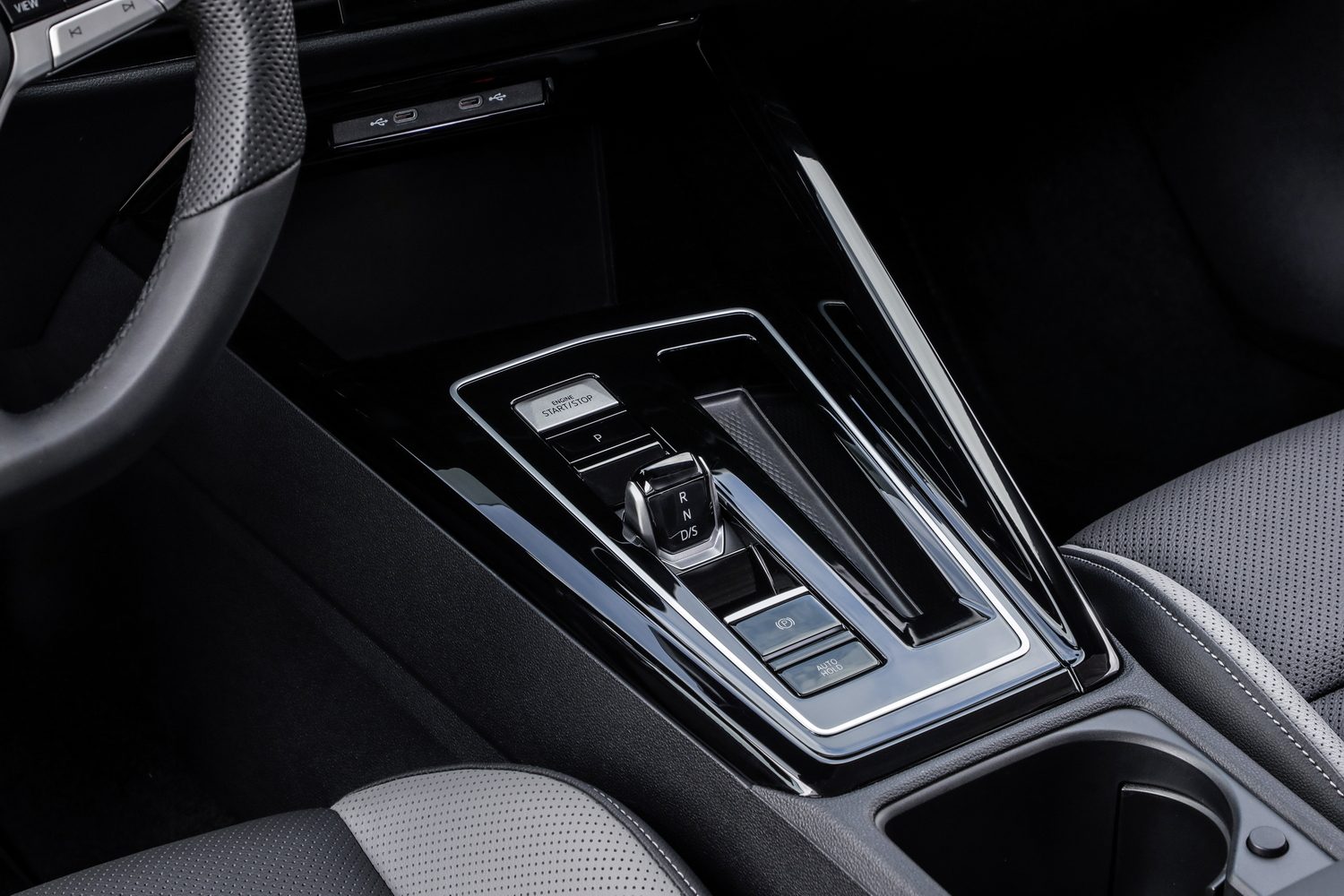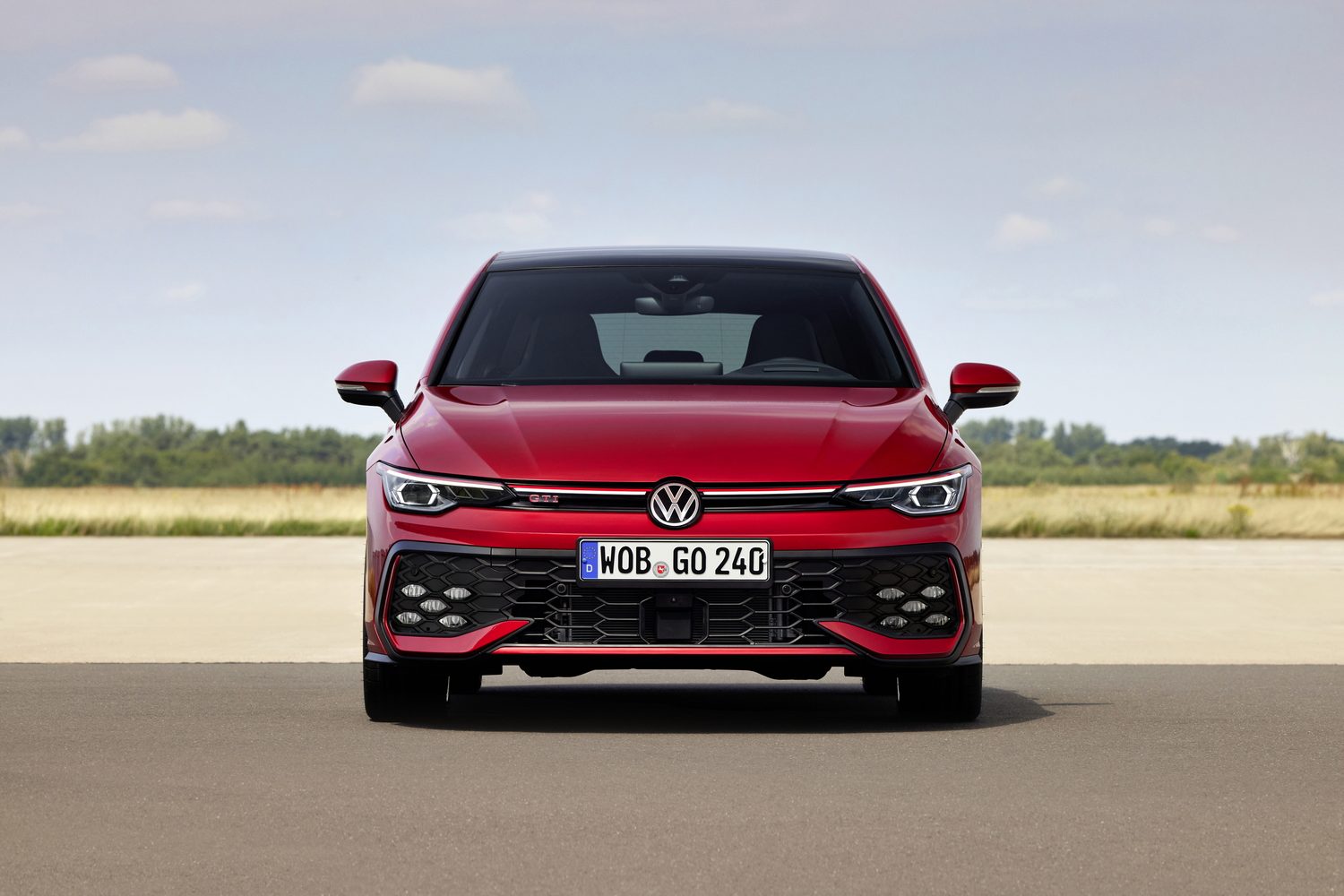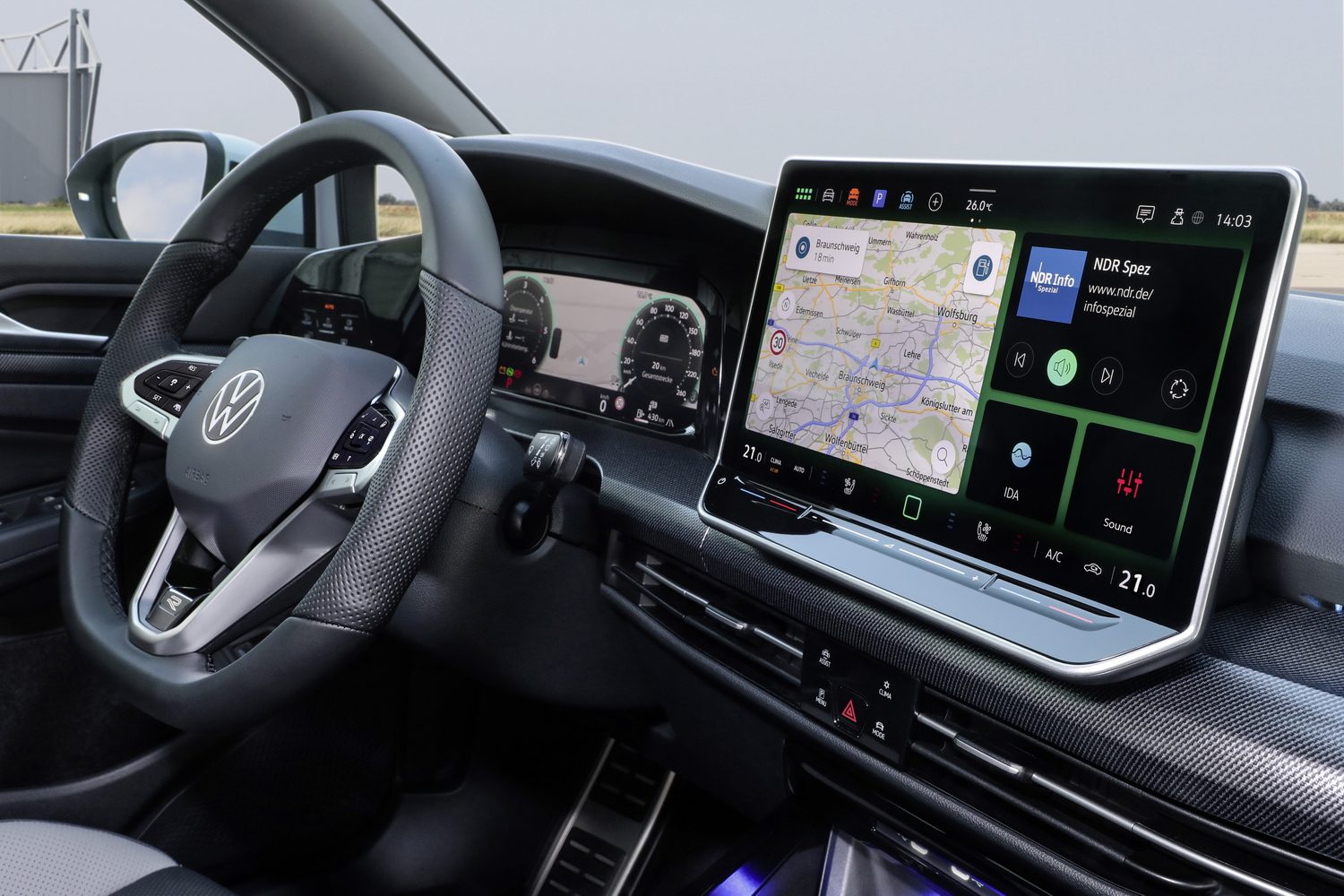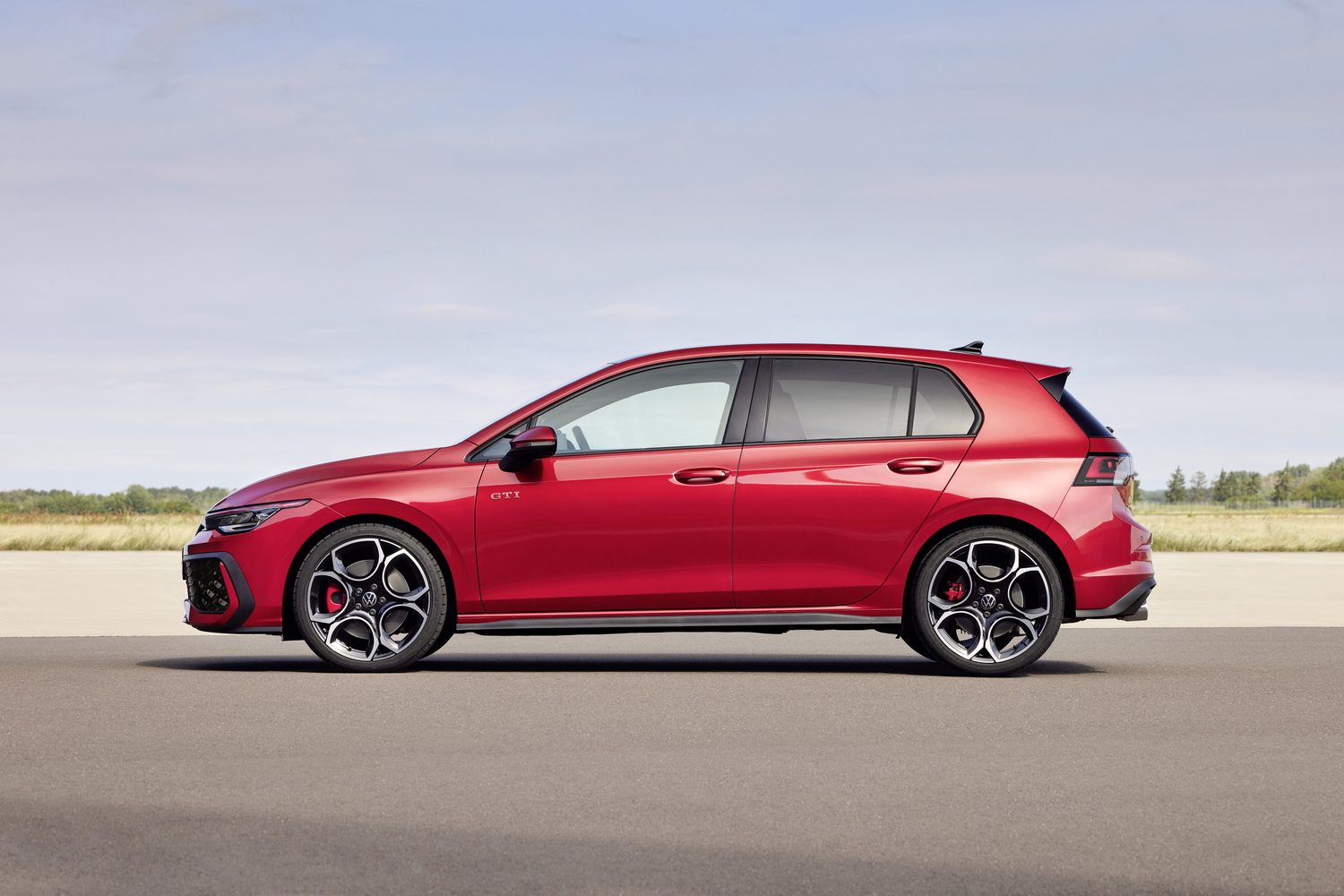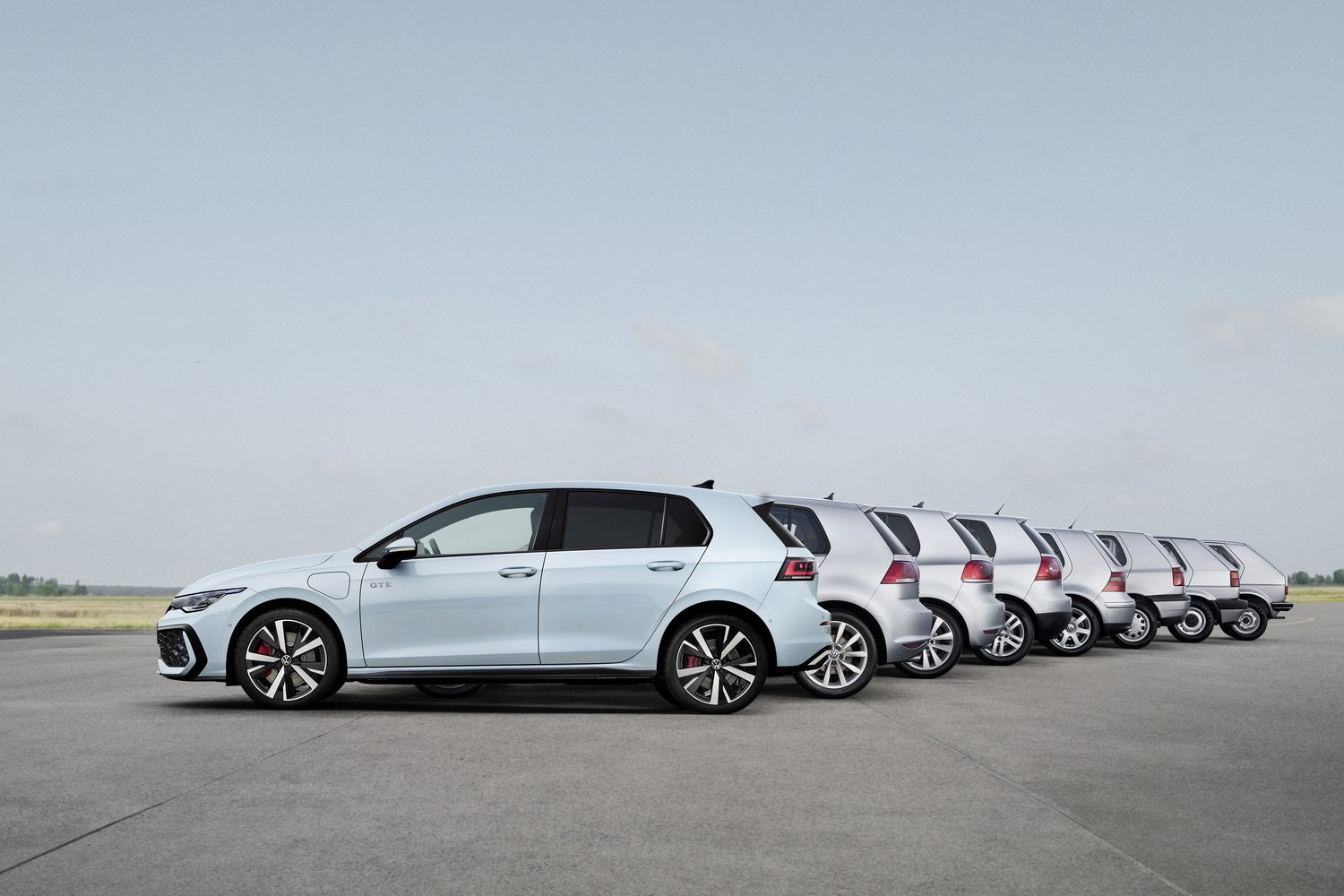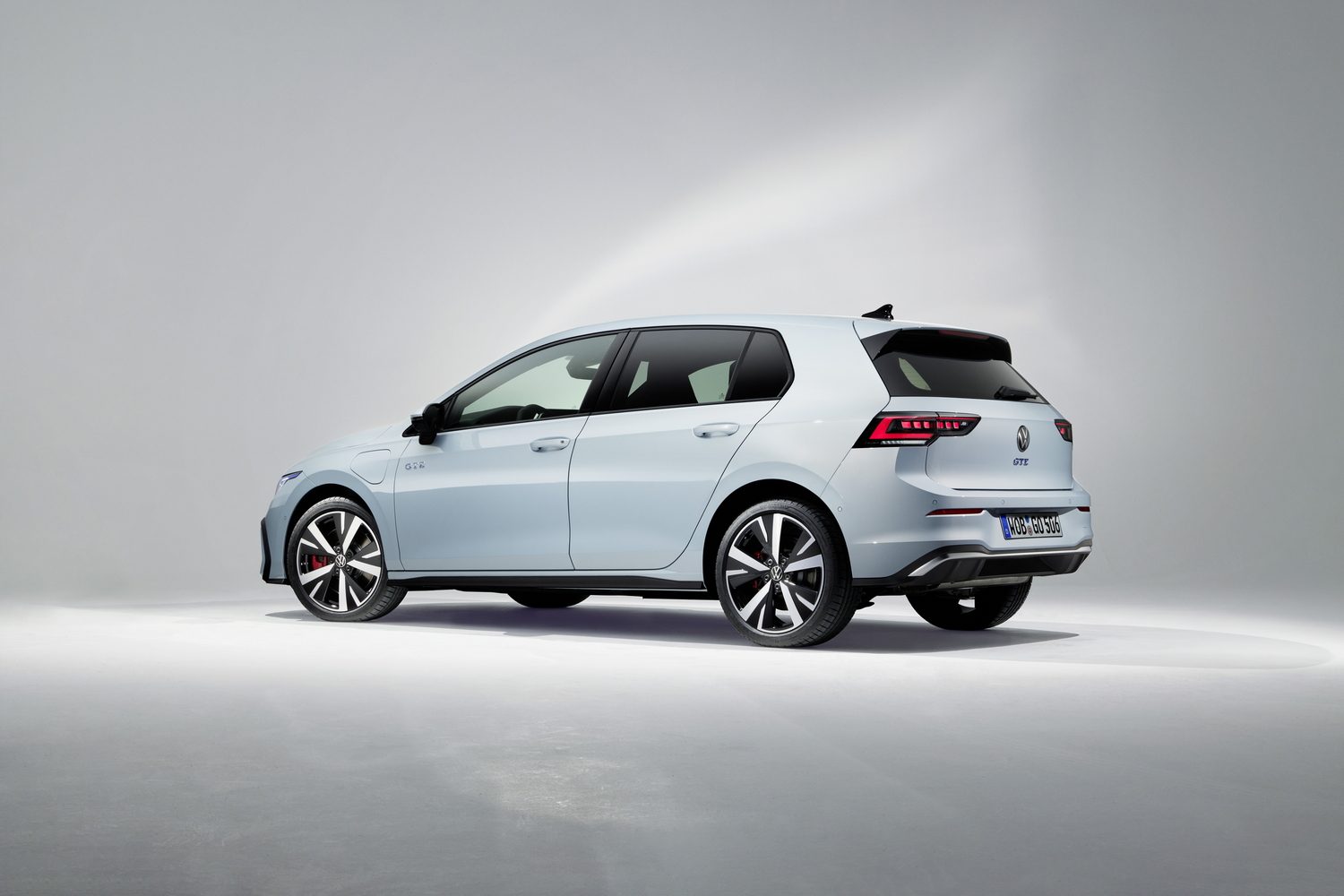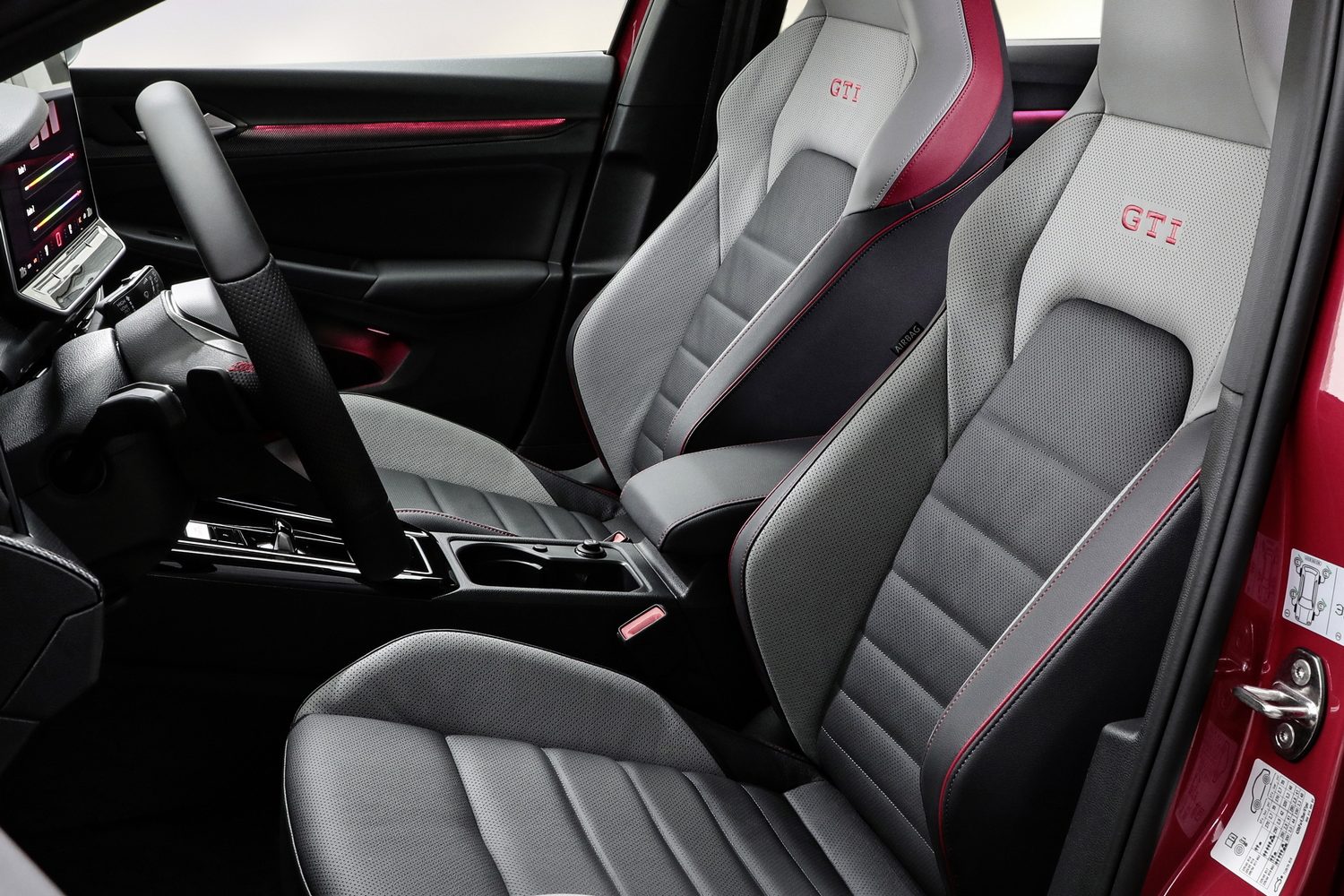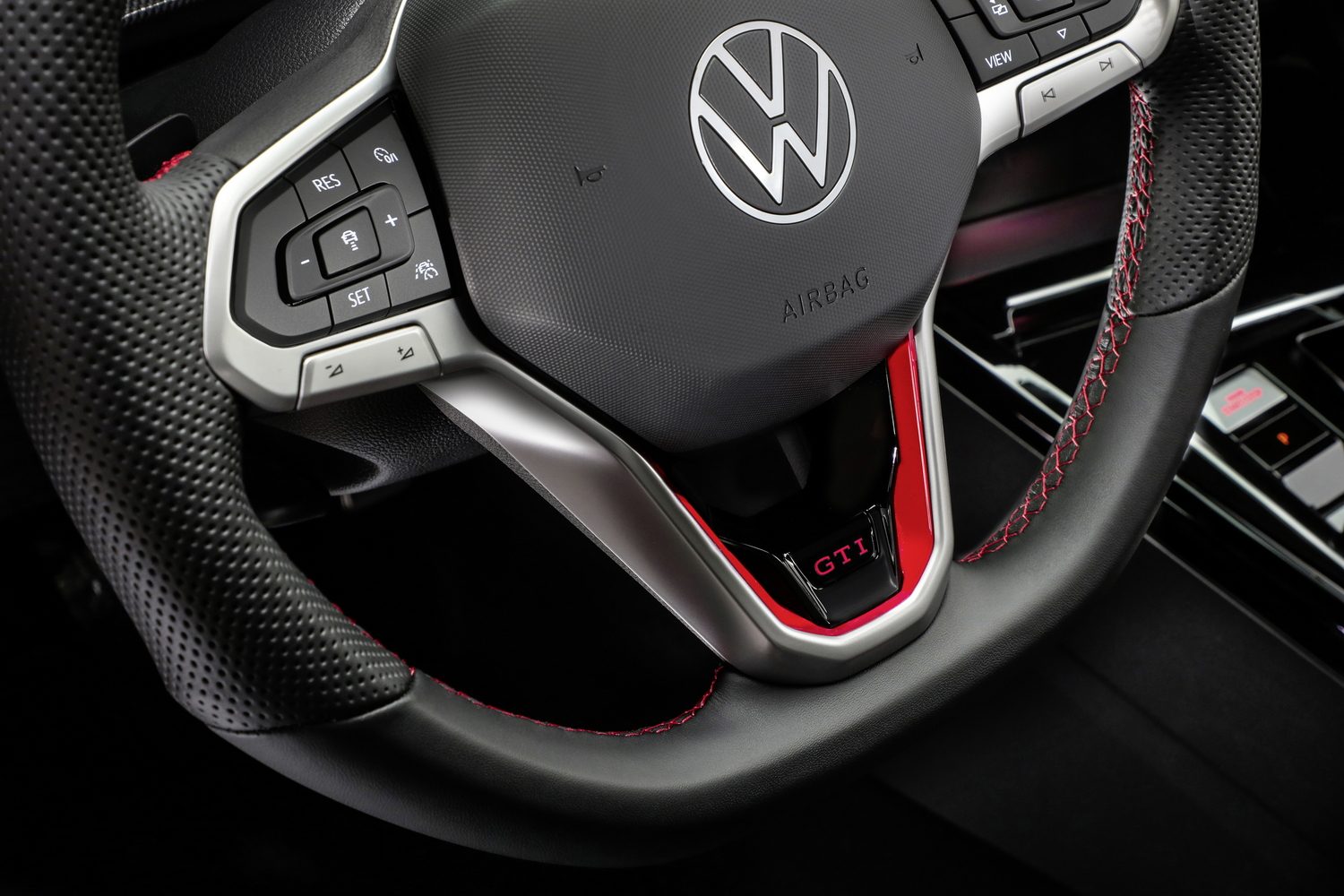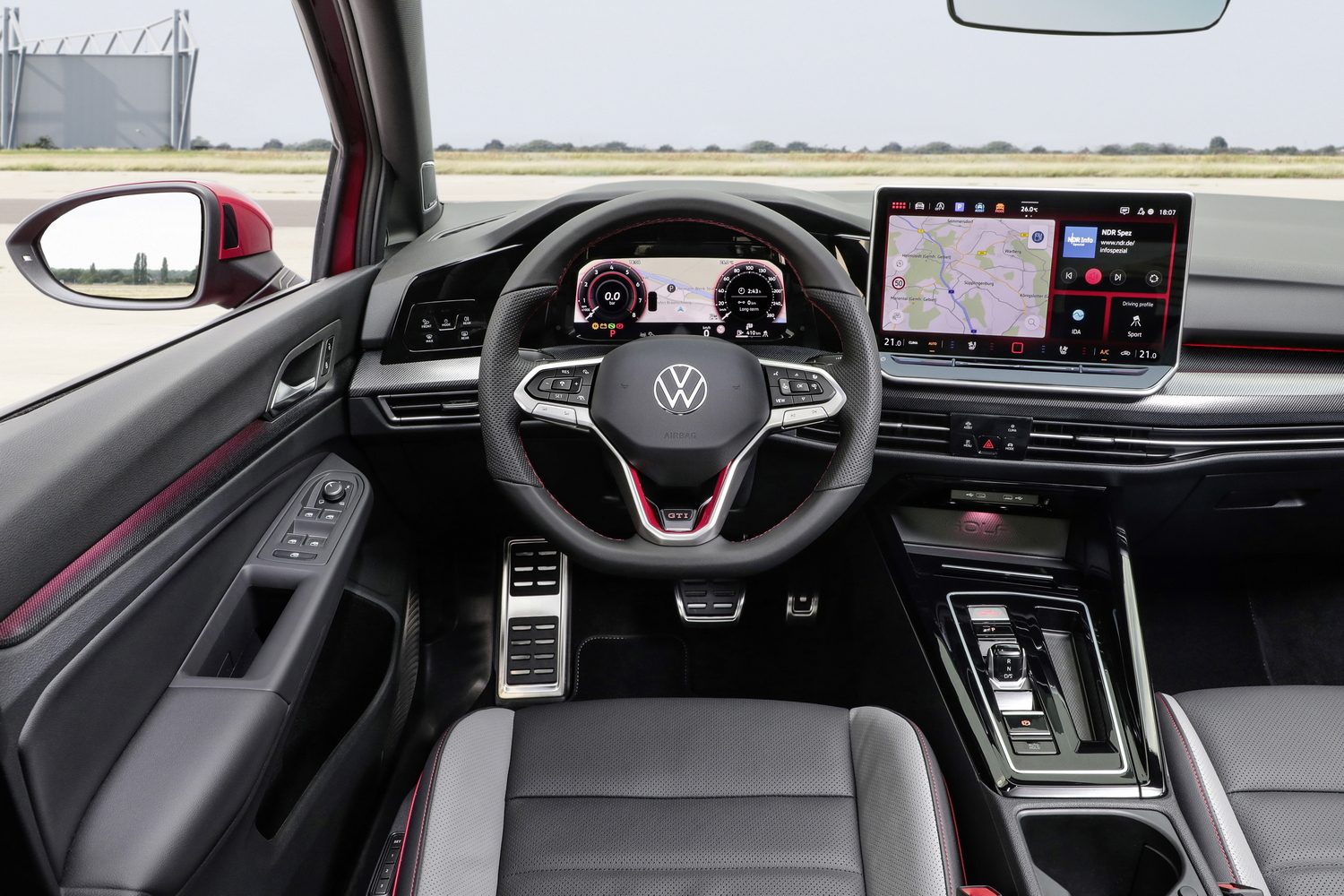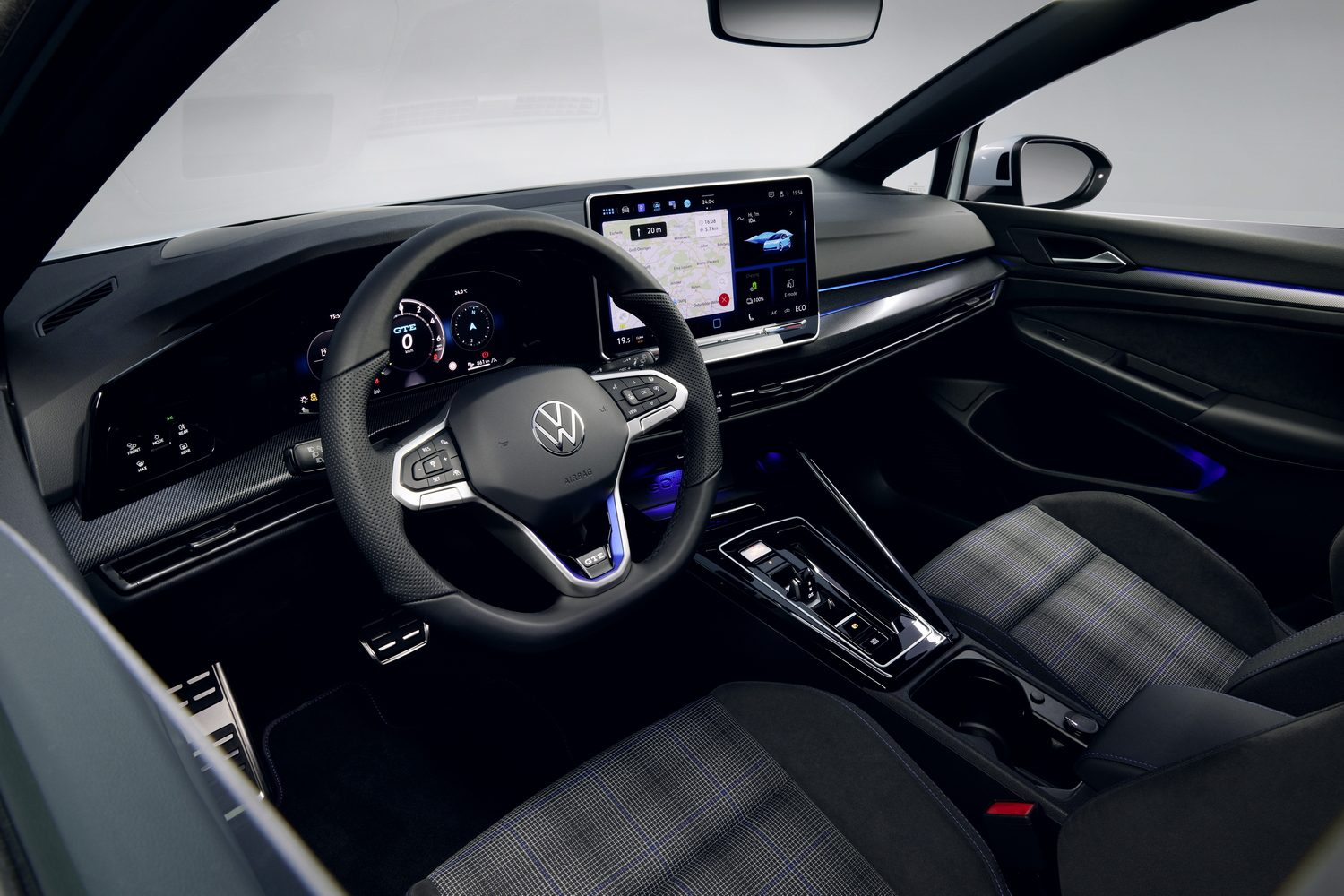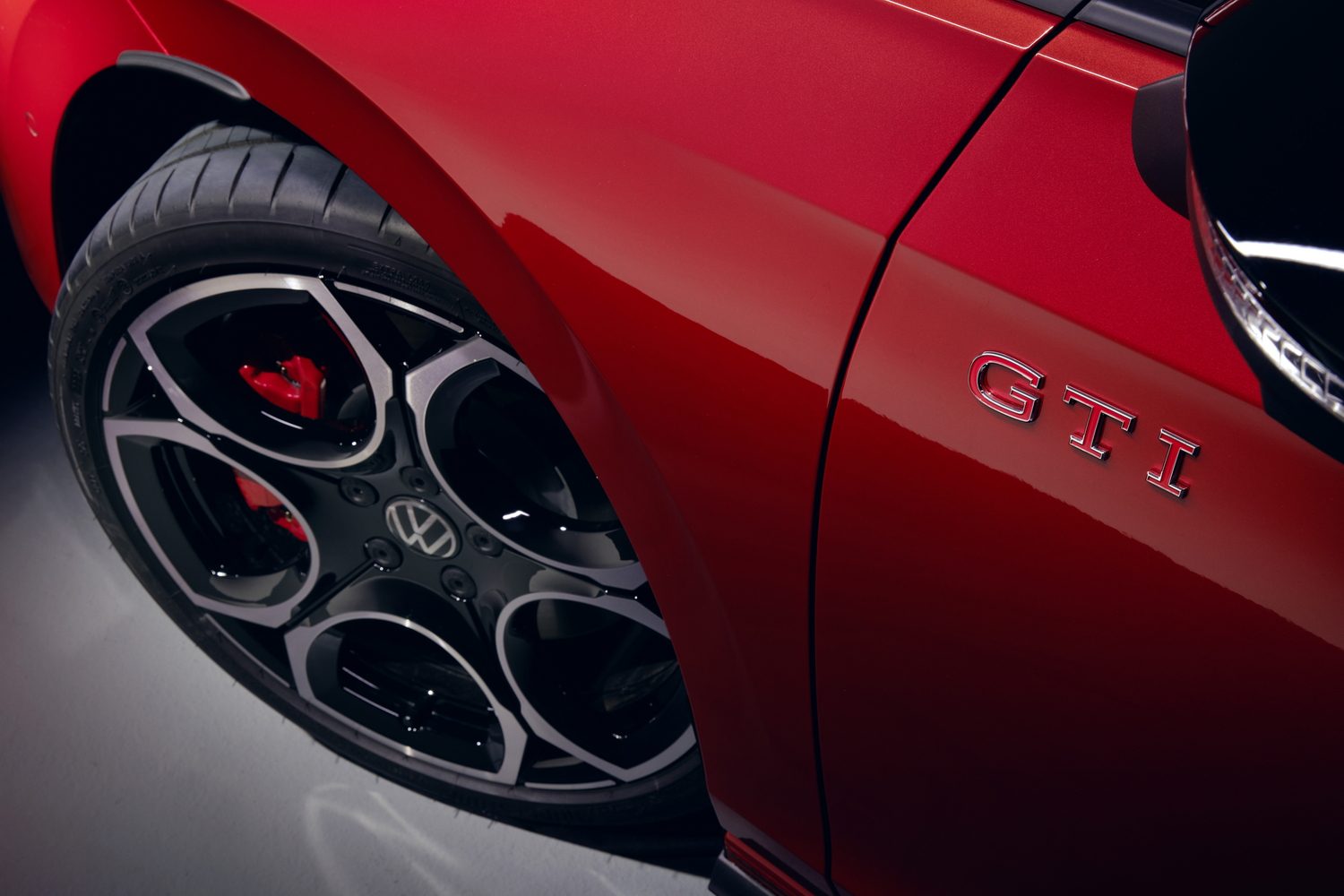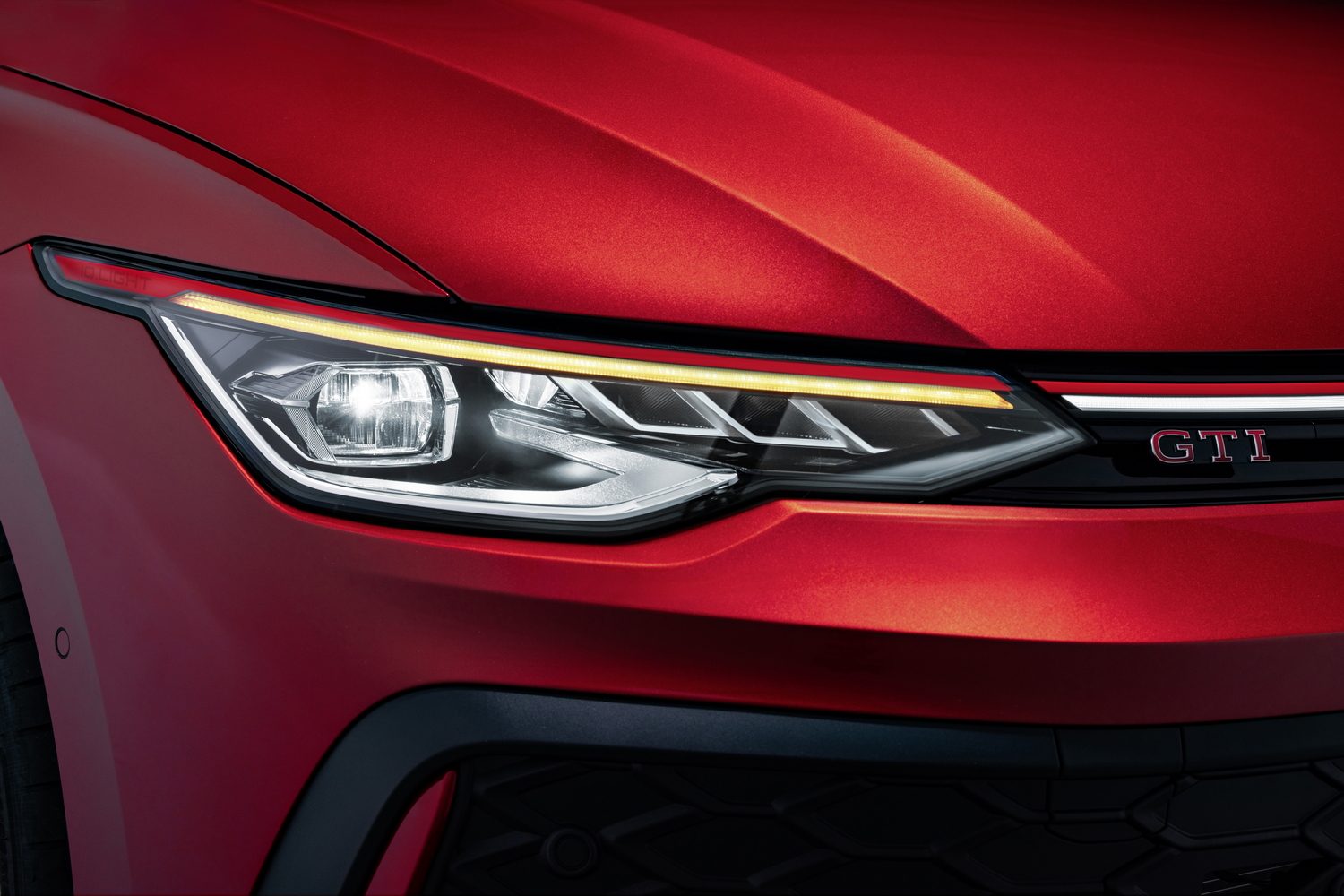This year marks the 50th anniversary of the Volkswagen Golf entering production, and to celebrate the German carmaker has taken the opportunity to update the current eight-generation model into what will informally be known as the 'Golf 8.5'. But don't bother looking for dramatic visual alterations: most of the changes revolve around revised powertrains and improved infotainment.
Lights fantastic
There are some subtly tweaked aesthetic flourishes involving the lights. Perhaps the big USP here is that the Volkswagen emblem in the nose of the 2024 Golf can optionally light up if you want it to.
Other than that, it's basically new light signatures in the clusters, which are pretty much the same overall shape as they were before. The standard headlights are LED, with customers needing to step up to either Performance Lights or the top-spec IQ.Light Matrix LED illumination if they want the glowing VW badge (though we are awaiting confirmed specifications for the Irish market). At the back, 3D LED signatures complete the look, with lower-spec Golfs also featuring a mildly redesigned front bumper.
Inside, the slider controls for the cabin temperature adjustment and infotainment volume have been redesigned to feel better to operate and they also have backlights now.
Sharper infotainment, more buttons on the wheel
The main infotainment has also been completely overhauled and is presented on a freestanding central display unit. Measuring either 10.4- or 12.9 inches across the diagonal, depending on which level of Golf you've opted for, this system - which Volkswagen calls 'MIB4' - is claimed to be far slicker and more intuitive to work with. It also has a natural-language voice assistant built in, called IDA (similar to a feature seen in Volkswagen's electric ID. models), and even the multifunction steering wheel has been overhauled too - it now has physical buttons rather than haptic touchpads.
Aside from these changes, Volkswagen is introducing four new metallic paint finishes - Crystal Ice Blue, Anemone Blue, Oyster Silver and Grenadilla Black - as well as the option of a black-painted roof on sportier R-Line, GTE and GTI models. There are also five new designs of alloy wheels, which range up to 19 inches in diameter, while the 10.2-inch Digital Cockpit Pro instrument cluster is fitted to all versions.
Volkswagen has also enhanced the suite of available driver assist systems, with Park Assist Pro - allowing owners to park the vehicle from outside using their smartphone - and Area View, a 360-degree camera system, both joining the Golf line.
Plug-in hybrids go further
Under the bonnet, Volkswagen continues with plain petrol engines badged TSI, 48-volt mild-hybrid petrol units called 'eTSI', turbodiesels (TDI), and then the eHybrid plug-in hybrid (PHEV) drivetrain. The eHybrid is not the only PHEV in the revised line-up, as the performance GTE variant is also a plug-in petrol-electric. The big news here is that both Golf PHEVs, which used to use a powertrain based on an older 1.4-litre turbocharged petrol engine, now employ the more advanced 1.5-litre TSI Evo unit with active cylinder deactivation technology as their basis.
Along with a suitably enlarged battery pack, up to 19.7kWh from 10.6kWh previously (those are the usable energy figures), it means the Golf PHEVs can go further on a charge than before. Volkswagen says that both will do around 100km on their electric power alone, with the 204hp eHybrid capable of up to 1,000km combined from its fully charged battery pack and brimmed fuel tank. The 272hp GTE has around the same overall range, with another neat feature being that the Golf PHEVs can be charged by means of a 50kW DC outlet, making for faster battery replenishment at public high-speed chargers.
Elsewhere, the Golf GTI - still using a 2.0-litre TSI petrol engine - has been given a 20hp shot in the arm, raising its peak output to 265hp. No word yet on exactly what this does for its benchmark performance stats, but we'd expect it to trim a tenth or two from the old 245hp GTI's 6.3-second 0-100km/h time.
While both the GTI and the GTE are available from launch, along with 115- and 150hp TSI and eTSI models, as well as 115- and 150hp TDIs and the 204hp eHybrid, the even faster GTI Clubsport and all-wheel-drive R will follow on later in the year. There's also a 2.0-litre TSI Golf planned with 4Motion, and an output increased from 190- to 204hp for 2025, but that's unlikely to come to Ireland - as is the Golf Estate model; we'll probably only receive the five-door hatch here.
All Golf models in the revised launch range will be front-wheel drive and use either a six-speed manual or seven-speed DSG dual-clutch auto as their transmission - except for the eHybrid and GTE PHEVs, which have six-speed eDSGs.
'The Golf does not get any better than this'
More than 37 million Golfs have been sold since it launched half a century ago - leading to the mind-boggling stat that, mathematically speaking, 2,000 people around the world have bought a Golf every single day since it first appeared. It's likely to be the last petrol-powered Golf we see, with the ninth-generation car due in 2028 already confirmed as being all-electric by the company's current CEO, Thomas Schäfer.
He himself, speaking of the current car's refresher programme, added: "The Golf has been at the heart of the Volkswagen brand for half a century now, offering affordable mobility for all at the highest technical level. It has constantly adapted itself to customer needs and has thus become a global bestseller. This is precisely what we are now building on with the latest evolutionary stage of the product line - with even higher efficiency, comfort and quality and a new operating concept. The Golf does not get any better than this."


